




As we transition from a summer fi lled with thrilling sports events like the Paris 2024 Olympics, UEFA tournaments, and the America’s Cup, the broadcast and media technology industry gears up for its own exciting season. The IBC Show 2024, taking place from September 13-16 at the RAI in Amsterdam, marks the start of a new academic year for our industry. This event is not just a trade show; it’s a hub of innovation, bringing together professionals from around the world to explore the future of media.
In this 134th issue of TM Broadcast International, we provide a comprehensive preview of IBC 2024. Our coverage highlights key sessions, emerging technologies, and the trends that will shape the industry in the coming year. From AI-driven production tools to the latest in streaming technology, IBC promises to showcase cutting-edge advancements that will rede fi ne the media landscape.
We are also excited to feature an exclusive interview with Lucinda Meek, CFO of the International Association for Broadcast & Media (IABM). Lucinda o ff ers valuable insights into how IABM is navigating the rapidly evolving media landscape, focusing on innovation and digital transformation. Her perspective on fostering sustainable growth and operational excellence provides essential guidance for industry stakeholders.
Editor in chief
Javier de Martín editor@tmbroadcast.com
Key account manager
Patricia Pérez ppt@tmbroadcast.com
Editorial staff press@tmbroadcast.com

Our special article, “Cameras for Social Media,” explores the growing in fl uence of social platforms on content creation. As social media continues to rede fi ne how audiences consume content, understanding the technology behind these platforms becomes crucial. This piece examines the latest camera technologies enabling creators to produce high-quality, engaging content tailored for social media audiences.
Additionally, this issue includes a product test of the Hollyland Solidcom C1 Pro intercom solution. Our detailed analysis evaluates its performance and features, providing valuable insights for professionals seeking reliable communication tools in their production setups.
As the industry walks from a summer of sports to a season of technological exploration, the IBC Show serves as a reminder of the dynamic nature of our fi eld. It is a time to reconnect, share knowledge, and forge partnerships that will drive the next wave of innovation. We invite our readers to immerse themselves in the opportunities and challenges that lie ahead, armed with the insights and expertise shared in this issue.
Welcome to the future of broadcast and media technology. Let’s embrace the new academic year with enthusiasm and a commitment to pushing the boundaries of what’s possible.
Creative Direction
Mercedes González mercedes.gonzalez@tmbroadcast.com
Administration
Laura de Diego administration@tmbroadcast.com
Published in Spain
ISSN: 2659-5966
TM Broadcast International #133 September 2024
TM Broadcast International is a magazine published by Daró Media Group SL Centro Empresarial Tartessos Calle Pollensa 2, oficina 14 28290 Las Rozas (Madrid), Spain Phone +34 91 640 46 43
News STORIES OF SUCCESS BUSINESS & PEOPLE
IBC 2024 | IBC 2024
IBC 2024:
All set for the Amsterdam show and the fast pace of the broadcasting industry
The International Broadcasting Convention (IBC) 2024 will be a bold moment in the day of the media and entertainment industry. From September 13-16, the RAI Convention Center in Amsterdam will showcase the latest in broadcast technology and the latest in content creation and distribution.

60 ASSOCIATIONS | IABM
Navigating digital transformation
Lucinda Meek, Chief Financial Officer of the International Association for Broadcast & Media (IABM), plays a key role in guiding the organization’s financial strategy as it navigates the rapidly evolving media technology landscape.


By Carlos Medina Audiovisual Technology Expert and Advisor
The Internet has changed many aspects of our personal and professional lives. As far as audiovisual content is concerned, it has led to other lines of business for traditional media, it has led to the birth of new forms of audiovisual consumption through the other platforms (OTT – Over The Top) and, above all, it has generated new content and provided any citizen, restless person and entrepreneur, the possibility to participate in social media.
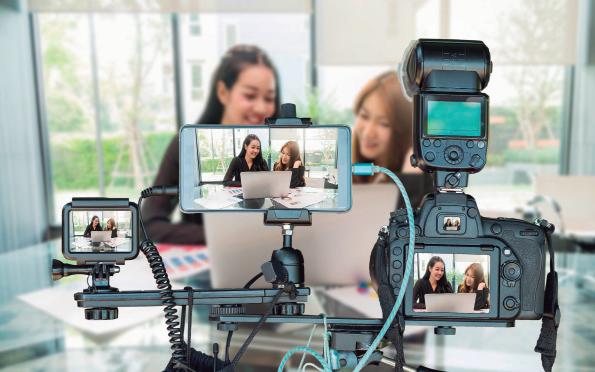
The big difference between the already known model and this new model, which carries the Pro label, lies in the major leap forward it offers to our communications thanks to the integrated noise suppression technology.
The New Equipment, including The Innovative OmniGlide Roving Platform, Is Being Used For Daily Newscasts and Weekly Talk Shows.
Regional public broadcaster L1, based in the Netherlands and serving the province of Limburg, has built a new production studio and equipped an existing control room with the latest technology from Telemetrics, an innovator in robotic camera control. Robotic Camera Control has helped broadcasters around the world build and maintain cost-effective operations that replicate human camera operators.
The equipment—including a OmniGlide® Roving Pedestal (with an LP-S5 head), five HP-S5 Pan/ tilt heads, a reFrame® server and a RCCP-2A STS robotics control panel—was installed in February
of this year for L1’s newest studio, where they produce a daily news program, and several talk shows every week. They’re using Grass Valley LDX C92 box-style cameras with Canon lenses on the Telemetrics P/T heads.
“We chose Telemetrics because we wanted to me more flexible and less dependent on the availability of camera operators,” said Bart Cuijpers, freelance AV system engineer at L1. “Also, the OmniGlide rover is able to do complicated moves to what a human operator can’t do. Human operators can’t do extremely complex movements and repeat them identically and consistently.
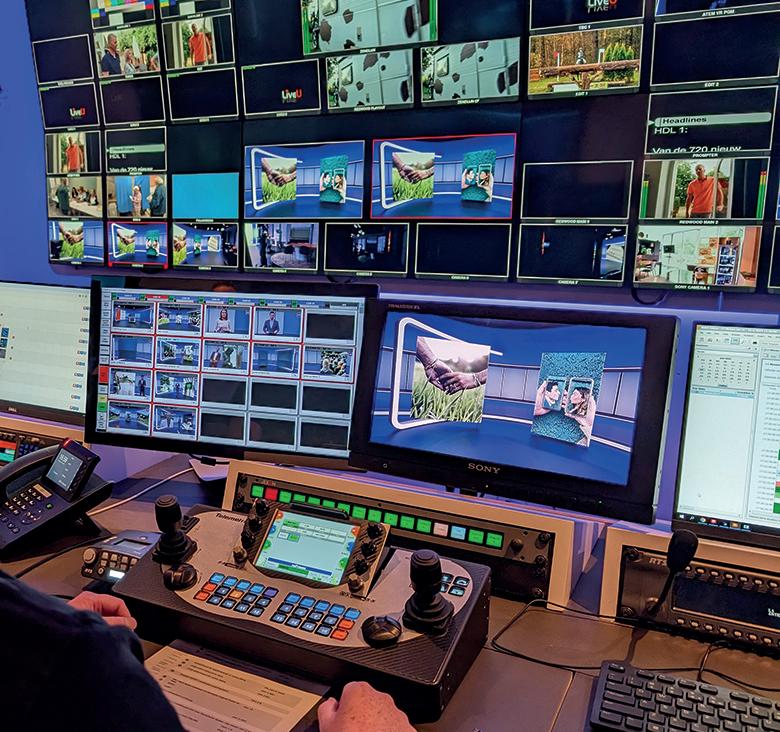
In fact, there’s not much we can’t do with the new Telemetrics equipment.”
Cuijpers added that the new equipment feels “very durable and well made” and that he would recommend camera robotics as a cost-effective way to equip and operate a studio and its staff “depending on the type of organization and program.”
One member of the technical staff received an in-depth on-site training by Telemetrics engineers, and then he instructed the other operators.
Along with the rover and pan/tilt camera heads, the broadcaster has purchased a RCCP-2A controller with Studio software that includes Telemetrics’ artificial intelligence (AI)-assisted reFrame Automatic Talent and Object Tracking. RCCP- 2A controller with reFrame continues to improve. It now combines the best tools for automated tracking, enabling users to track talent or live presenters more accurately as they move and turn their heads on camera. For example, if someone is not facing directly at the camera, the system will still track them and keep them perfectly centered in the frame at all times.
L1’s new studio now also features Telemetrics reFrame Server, which extends the automatic camera tracking capabilities flexibility of reFrame software to all of the robotic cameras in the studio.
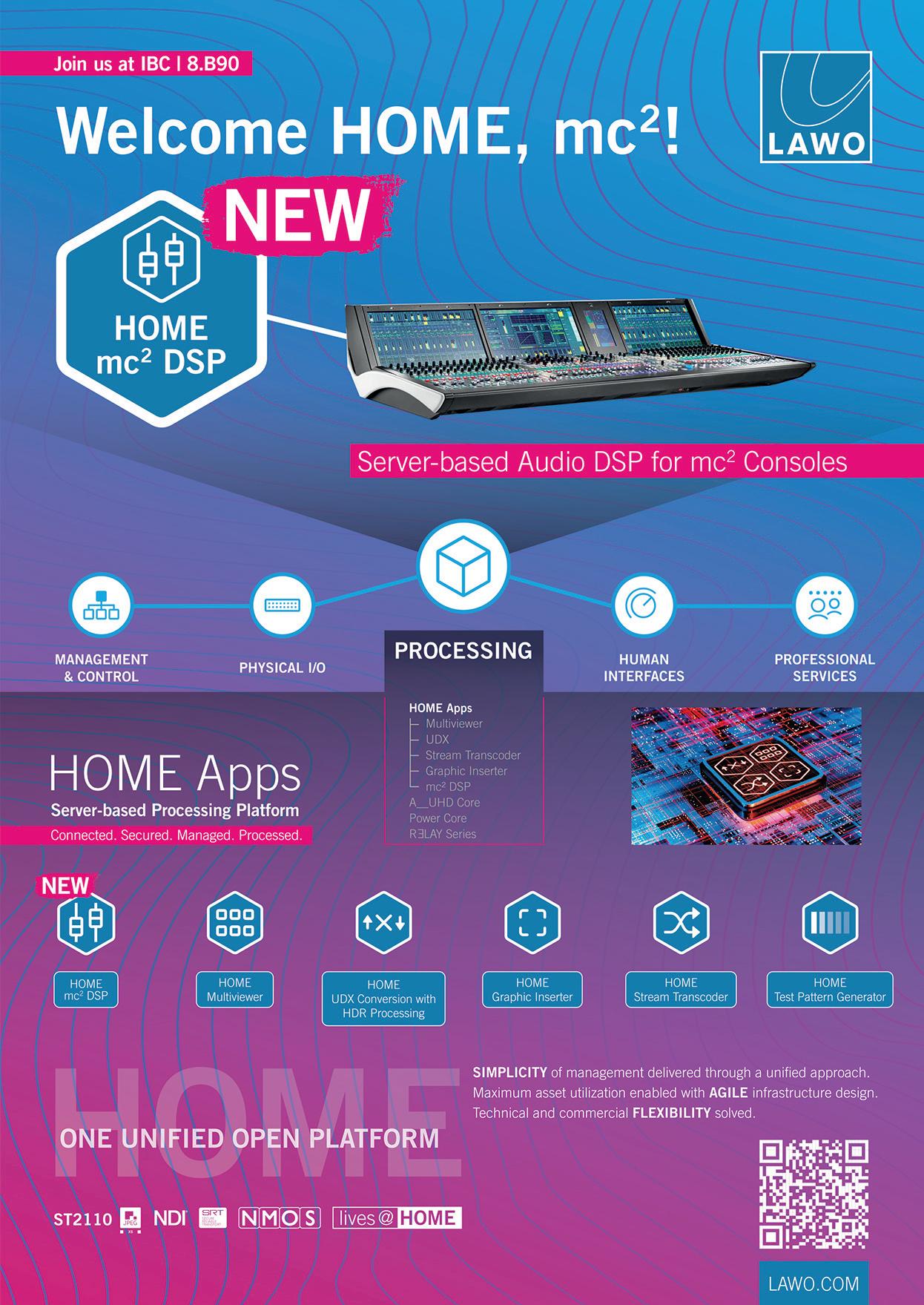
Zixi-as-a-Service enables reliable delivery to U.S. partner networks
Zixi has announced that RCN Colombia, a top news, sports, and entertainment network in Latin America, is now using Zixi to distribute its premium content to affiliates across the United States.
RCN Colombia, known for its engaging telenovelas, breaking news, major sports events, and a diverse range of entertainment, has seen a rise in demand for its Spanish-language content in the U.S. With a mission to inform, entertain, and connect viewers with content that embodies Latin American culture and values, RCN has chosen to integrate Zixi into its operations. This integration has streamlined content distribution by removing the need for traditional satellite and fiber infrastructure. By adopting Zixi-as-a-Service (ZaaS), RCN has effectively transitioned to a more cost-efficient cloud-based infrastructure while retaining the reliability of satellite delivery. A key component of this transition is the Zixi Broadcaster, which acts as a bridge, transferring content from on-premises sources to the cloud. Once in the cloud, the Zixi SDVP processes and distributes the content to affiliates, all managed by ZEN Master, Zixi’s cloud control plane that provides operational efficiency and comprehensive oversight.
The Zixi Enabled Network, trusted by over 1,000 media companies and supported by more than 400 technology
partners, enables content owners like RCN to seamlessly expand their audience reach. With the widespread adoption of Zixi by major U.S. operators such as Charter, Dish, and Verizon, RCN was able to shift from traditional satellite workflows to an IPbased distribution model without requiring new development or facing resistance from partners. This move to IP distribution through Zixi’s SDVP not only accelerates the onboarding of new affiliates but also enhances operational flexibility and reduces costs. By replacing large satellite farms with more streamlined on-premises servers and utilizing the expansive Zixi Enabled Network, RCN can efficiently deliver its content to new markets and explore additional revenue opportunities without incurring in significant upfront infrastructure expenses.
Zixi’s reputation for reliability and scalability, bolstered by patented features like Hitless Failover and optimized protocols, ensures smooth content delivery. The Zixias-a-Service platform brings the benefits of the SDVP to the cloud, providing a cost-effective solution that reduces setup time and resource requirements, allowing RCN to focus more on expanding its business and driving revenue growth. Furthermore, Zixi’s protocol optimization helps reduce egress costs and minimizes overall computing
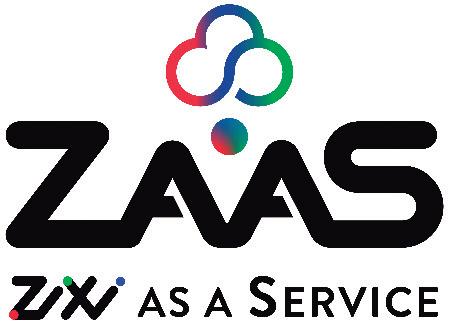
power needs, lowering the total cost of ownership for RCN. The user-friendly ZEN Master interface equips engineers and operators with the tools to manage, control, and monitor signals across the distribution network, ensuring reliable transmission with the added advantage of patented hitless failover.
“The demand for high-quality Latin American programming in the United States is on the rise, and RCN Colombia, with its exceptional content lineup, is perfectly positioned to meet this demand. However, traditional satellite workflows were not scalable enough for efficient distribution,” said Omar Silva, Telecoms Director at RCN. “Zixi offers the flexibility and scalability that RCN needs while keeping costs low and simplifying the distribution process with its comprehensive solution.”
“Zixi has a long history of delivering content to partners and audiences around the globe, and our extensive experience in managing large-scale workflows is incredibly beneficial to our customers,” said Bruno Forchieri, Senior Director of Sales at Zixi.
“We support our clients from the design phase through implementation, allowing them to focus on business growth.”
Zixi will be exhibiting at IBC from September 13th to 16th. To schedule a meeting and learn more about the industry’s lowest total cost of ownership, please visit the Zixi website.

Grass Valley announces the successful implementation of an innovative remote production workflow by DMC Production using Grass Valley AMPP at the Nordea Open tennis tournament. This groundbreaking approach has revolutionized sports broadcasting, delivering significant advancements in efficiency, cost reduction, and environmental sustainability.
According to the company’s statements, DMC has redefined its production workflow by processing all signals on-site, marking a substantial departure from previous methods that involved transporting signals to off-site locations for processing. Leveraging six Grass Valley LDX 98 cameras, LiveTouch X replay systems, Audiomix X audiomixer, and a Maverik X production switcher powered by the AMPP platform, this streamlined approach ensures simplified and cost-effective operations.
“Last year, we transported all signals from the venue to Oslo for processing, which required substantial bandwidth and logistical effort,” explained Johan Hedblom, Managing Director of DMC Sweden. “This year, by processing everything on-site using AMPP, we only need to transmit a single world feed signal from the venue. This not only reduces bandwidth requirements but also simplifies the overall setup.”
workflow and effi
The new workflow has significantly minimized the need for on-site personnel and equipment. Only six crew members, including four cameramen, an assistant engineer, and a broadcast coordinator, are required at the venue. Camera control and shading are managed remotely from Norway, while the director, sound engineer, and replay operator operate from DMC’s facilities in Stockholm. For the world feed, ATP-Media is adding international commentary and graphics from London. Adam Marshall, Chief Product Officer at Grass Valley, commented, “We are excited to see DMC harnessing our AMPP solution to push the boundaries of remote production. This setup not only highlights the flexibility and power of AMPP but also aligns with our commitment to delivering sustainable and costeffective broadcast solutions.”

Environmental and cost benefits
The environmental and economic benefits of this approach are substantial. By reducing onsite personnel and minimizing equipment transportation, DMC has significantly cut travel and accommodation expenses. This method also decreases the environmental impact of production, supporting broader industry objectives for sustainability.
Feedback and future deployments
Feedback from the Nordea Open crew has been overwhelmingly positive, noting the streamlined setup and management compared to previous years. This successful deployment sets a new benchmark for future events, including the upcoming CEV Eurobeach Volley in the Netherlands from August 13-18, where the AMPP solution will handle production.
“The difference this year is remarkable,” added Johan Hedblom from DMC. “Reduced high-bandwidth connectivity needs and simplified logistics have not only smoothed the production process but also made it more cost-effective. This innovative approach allows DMC to explore new revenue streams by covering events like the Padel Swedish Championship and the PBA Bowling Tournament in Sweden for the first time.
We look forward to applying these insights to enhance workflows for future events.”
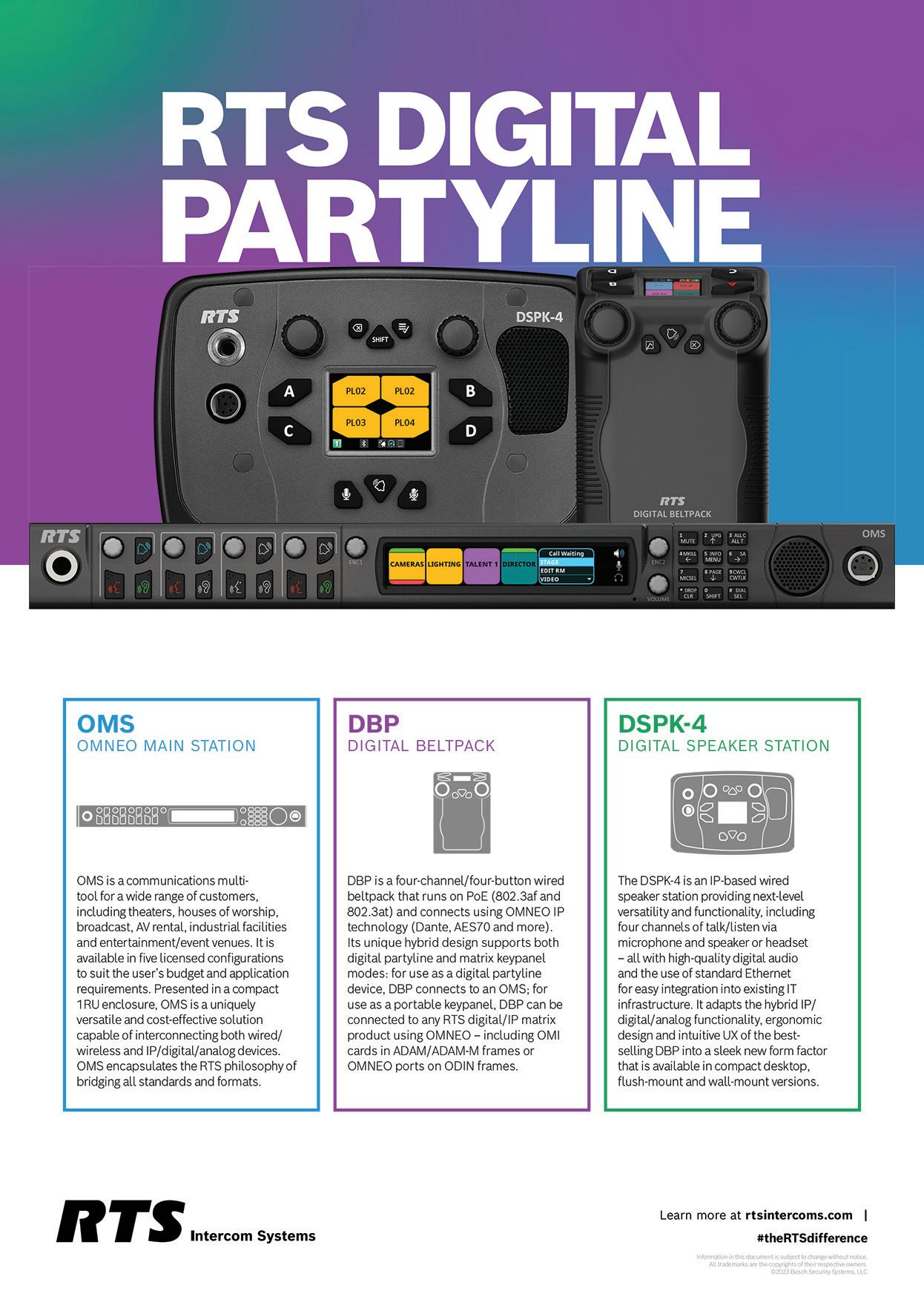
ITV
News has embarked on a transformative initiative with LiveU, enhancing its news coverage capabilities through an integrated IP-Video EcoSystem designed to streamline operations and increase sustainability
Building upon their longstanding partnership, ITV News has integrated a range of LiveU technologies to bolster live newsgathering efficiency and flexibility. The broadcaster’s primary goal was to enhance sustainability across its operations while leveraging the latest advancements from LiveU. This initiative reflects ITV’s commitment to producing content more efficiently and economically, aligning with both environmental and operational objectives.
Launched in 2022, the deployment encompasses the entire video production workflow, from contribution and production to distribution. ITV News utilizes multiple LiveU portable mobile encoders, including the LU800 and LU300 models, deployed nationwide for daily newsgathering activities. The LU800 units, equipped for multi-camera setups, are integrated into ITV’s fleet of sustainable news production vehicles (NPVs), developed by NEP as plug-in hybrids with onboard batteries. These units can operate autonomously outside traditional broadcast truck limitations. Additionally,

the LU300 units serve as versatile roving units, expanding ITV News’ newsgathering capabilities with a compact solution, complemented by the LU-Smart mobile app.
ITV also maximizes LiveU’s EcoSystem capabilities, including Video Return for studio interactions and Audio Connect for seamless communication between news anchors and field teams. The broadcaster utilizes LiveU Matrix, a cloud-native IP video distribution platform, for high-quality, low-latency live feeds across regional stations, ITN in London, and external partners.
Steve Teague, Head of Technical Services for ITV News, highlighted the advantages of LiveU’s IPbased platform: “LiveU’s platform was appealing due to its IP-based nature and inherent advantages over traditional transmission methods. It allowed us to redefine our partnership with LiveU toward a more serviceoriented model, fostering collaboration and mutual evolution, which has been crucial to the success of this project.”
Teague emphasized the operational impact: “The majority of our daily transmission is now handled through LiveU. The EcoSystem has proven invaluable,
particularly Audio Connect, which was customized to meet our specific needs. Our close collaboration with LiveU has accelerated development cycles and enhanced overall efficiency.”
Reflecting on the broader implications, Teague added, “Our relationship with LiveU has significantly strengthened. Their technology has reshaped our newsgathering processes, and IP bonding has become indispensable.”
Matt Stringer, Sales Director at LiveU, echoed Teague’s sentiments: “This collaboration with ITV News has driven innovation in our solutions portfolio and operational strategies. It’s a testament to our commitment to continuous improvement and responsiveness to customer feedback. These advanced workflows set a benchmark for broadcasters aiming to push the boundaries of what’s achievable.”
Stringer concluded, “LiveU remains at the forefront of broadcast technology, driven by customer insights that shape our future innovations. We value this ongoing dialogue as it ensures we meet the evolving needs of broadcasters worldwide.”
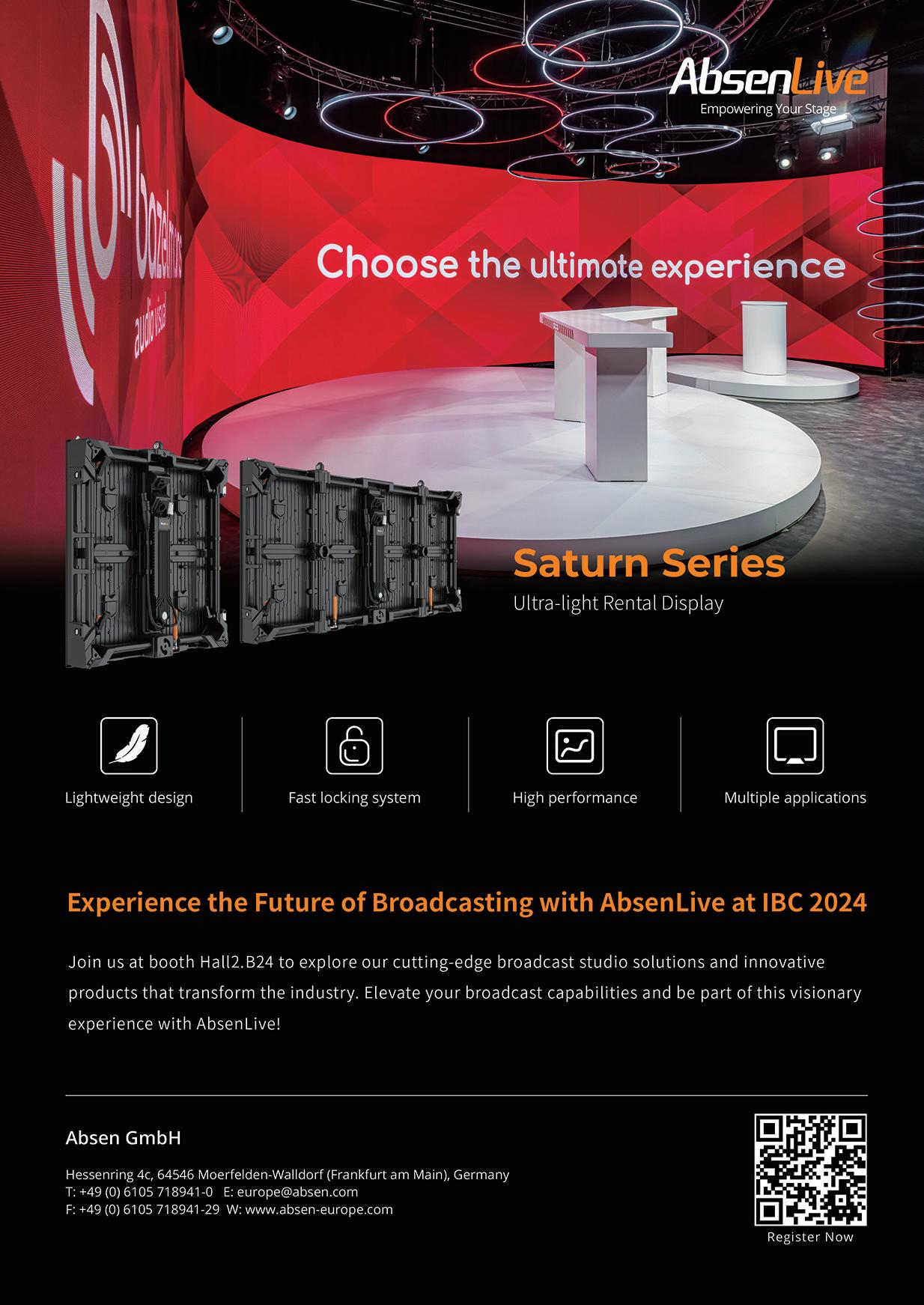
Radio Kol-Chai, a broadcast and live streaming station based near Jaffa, has selected DHD audio mixers and processing cores as part of its relocation to new production studios. The integration was carried out by Broadcast Design Ltd., a alQuds-based audio technology specialist, and includes an array of advanced equipment: four DHD SX2 consoles (two with 16 faders and two with 22 faders) and 11 TX2 compact multifunction touch panels. Six of the TX2 mixers are designated for use by hosts and producers in each studio, with two allocated to editing booths, two for supervisors, and one for the TV control room. The processing and network interfacing are managed by DHD XC3 cores.
Established in 1996, Radio KolChai offers two channels: Radio Kol-Chai FM and Radio Kol-Chai Music. The FM channel features news, live discussions, podcasts, and music, alongside general information and entertainment, broadcasting six days a week on 93.0 FM and 92.8 FM in the al-Quds district. Additionally, all programs are available for live streaming and on-demand viewing via their website, www.93fm.co.il, catering to a broader global audience.
“We have set up four studios,” explains Micha Blum, founder and CEO of Broadcast Design. “Studio 4 is equipped for video production with a 22-fader
DHD SX2 console. Studio 1 is dedicated to Kol-Chai’s general channel, and Studio 2 is for Kol Chai Music. Studio 3 is configured for recording and can also function as a backup studio. Each studio and voiceover booth is flexible and can be assigned to any channel. One of the two editing booths is equipped to deliver Top of the Hour news.”
Blum highlights the versatility of the DHD consoles, stating, “Radio Kol Chai produces a wide range of content, including news bulletins and hourly newscasts from multiple locations such as our Jerusalem studio or from remote setups. This requires sophisticated talkback and codec management between these sites and the team at our Bnei Brak headquarters. DHD audio consoles were selected because they manage all feeds, codec assignments, monitoring, talkbacks, alarms, and silence detection, along with traditional audio mixing and production tasks, without the need for additional third-party equipment.”
The new setup allows for flexible use of resources, as Blum notes,
“The DHD system lets us easily assign any control room console to any studio. For instance, the main studio’s control room can handle a live broadcast while the studio itself is used for a different recording. We’ve implemented automatic routing to manage bidirectional talkbacks between the host, producer, and technician across more than eight audio codecs, with clear status indicators to prevent errors.”
Blum also mentions that the move to a new location was an ideal opportunity to integrate a more advanced interconnection architecture, which enhances operational efficiency and simplifies future expansions. “The feeds from each studio to the master control room are transmitted via DHD’s APC Audio, allowing multiple audio channels to connect through standard network cables. The system is also used for Radio Kol-Chai’s visual radio productions. We provided comprehensive training to the Radio Kol-Chai operations team and support technicians.”



DMagnifi by VideoVerse, an AIdriven video technology company known for its video-editing SaaS platform, has announced significant additions to its sales team. The company has appointed Heiko Stroh as Director of Sales for the DACH region (Germany, Austria, and Switzerland), and Ken Ruck as the new Vice President of Sales for the U.S.
Heiko Stroh, who brings over 18 years of experience in the sports industry, will spearhead Magnifi’s expansion in the DACH market. With a deep understanding of the Germanspeaking sports sector, Stroh is set to leverage his extensive expertise in business development, marketing, and customer relationship management to enhance Magnifi’s presence in the region.
Stroh’s impressive resume includes key roles at renowned organizations like Opta, Perform, Sport1, and VfB Stuttgart, where he successfully led business development and customer engagement initiatives. His experience positions him well to drive growth and establish the Magnifi brand across the DACH region.
Expressing his enthusiasm for the new role, Heiko Stroh said, “I am excited to be joining Magnifi as we stand on the brink of a new era in the sports industry, driven by the transformative power of AI. I look forward to helping to redefine business development and customer engagement in the DACH region, establishing a strong foothold and leading the way in AI-driven sports solutions.”
Magnifi’s strategic focus on the DACH region aligns with the market’s robust growth in sports media consumption. According to Stasia reports, the sports market in Germany is expected to grow by 11.84% from 2022 to 2029, reaching a market volume of $148.30 million by 2029. The addition of Stroh, who is familiar with the language, culture, and market dynamics, is seen as pivotal to Magnifi’s efforts to capture this growth.
In a parallel move to strengthen its U.S. operations, Magnifi has appointed Ken Ruck as Vice President of Sales. Ruck, with over 22 years of experience in technology and media, will lead the company’s sales strategy across the United States, aiming to expand Magnifi’s market footprint.
Before joining Magnifi, Ken Ruck was Executive Vice President of Sales & Commercial Operations at Videon, a live sports technology company. There, he oversaw global sales and operations, successfully deploying the company’s technology in over 1,500 venues
worldwide. His leadership helped secure major clients, including the Premier League, Wimbledon, NFL, NHL, and MLB.
Commenting on his new role, Ruck said, “I am thrilled to join Magnifi at a pivotal time in the sports industry, where AI is set to revolutionize how content is created and distributed. With over two decades of sales experience for major sports events and organizations, I am eager to help drive growth in the U.S. and help establish Magnifi as the leading force in sports AI production.”
Ruck’s career also includes roles as Principal at Amazon Live, where he launched an AI-enabled live video platform that achieved $500 million in annual revenue. He has led several successful startups, including Linus ASX, Flash Networks, Oberon Media, and Hemisphere Interactive, and held senior positions at Viacom, Turner, Virgin, and Kodak.
Meghna Krishna, Chief Revenue Officer at Magnifi, welcomed the new appointments, stating, “We are excited to welcome Ken to the Magnifi team during this critical phase of our growth. His impressive experience in leading sales efforts in the sports technology industry makes him the ideal leader to help grow the company’s U.S. presence.”
These strategic hires underscore Magnifi’s commitment to expanding its influence in key global markets, harnessing AI to transform sports content creation and distribution.

The Arvato Systems Vidispine team has announced a strategic partnership with TMT Insights, aiming to modernize sports media supply chains to better compete in today’s multi-platform and multi-channel distribution environment.
With the global demand for sports content rapidly increasing, this collaboration is designed to help content owners and distributors enhance their media delivery processes from production to broadcast and streaming, including FAST channels and direct-to-consumer (D2C) platforms.
Arvato Systems’ Vidispine team, known for its media management platform, VidiNet, is aligning its resources with TMT Insights, a provider of media and entertainment consulting, implementation, and software development services. This partnership is set to bring the efficiency and agility typical of Hollywood production environments to the world of sports media. By leveraging the scalable media asset management (MAM) and orchestration tools of the Vidispine suite, combined with TMT’s expertise in professional services, sports teams, leagues, and broadcasters now have a blueprint for streamlining their media operations into centralized,
efficient supply chains, both companies state.
“Demand for multi-screen sports content is at an all-time high. Fans are deeply committed, consuming media far beyond game days—on TVs, phones, laptops, social media, and podcasts,” said John Proctor, Director of Sales for North America for the Vidispine portfolio. “Brands need to meet these evolving viewing habits with future-proof technology and a skilled team to implement it rapidly. Our partnership with TMT is about delivering exactly that.”
For sports brands looking to integrate their technology stack seamlessly into their daily operations, TMT’s Polaris operational management platform offers additional efficiencies. When Polaris’s frontend is combined with Vidispine’s robust backend orchestration, the result is a powerful system that benefits various roles across the organization.
“Polaris is designed to provide a single-pane-of-glass view into every aspect of an organization’s content supply chain, from production to distribution. Its data-centric approach creates a ‘universal language’ for endto-end processes,” said Hannah Barnhardt, COO and Co-founder of TMT Insights. “This integration combines Vidispine’s powerful automation with essential data

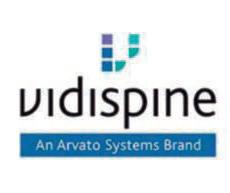
like titles, versions, metadata, and work orders. Now, stakeholders from different departments— such as schedulers, content producers, social media managers, engineers, and editors—can collaborate within the same platform, ensuring that all activities across the technology stack are aligned,” added Barnhardt.
From managing single live events to deploying FAST channels, the partnership targets the real-world challenges faced by sports media. With a diverse range of content types and numerous audience access points, sports organizations constantly balance opportunity costs. This joint solution aims to simplify repetitive tasks and automate the audio/video supply chain, enabling brands to better monetize their content intelligently. The routine tasks of fulfillment—such as file ingestion, data management, metadata enrichment, and delivery—should not impede the creation of engaging, personalized content for viewers.
The collaboration between the Arvato Systems Vidispine team and TMT Insights sets a new standard in sports media distribution, providing a streamlined, efficient solution that meets the evolving needs of content creators and distributors in the digital age.

Lawo recently announced the appointment of Martin Braun as the new Head of Sales for the D-A-CH region, encompassing Germany, Austria, and Switzerland. With over 25 years of experience in the broadcast industry, Martin Braun brings a wealth of knowledge and leadership to Lawo’s sales team.
In his new role, Braun will be tasked with developing and executing sales strategies, enhancing market presence, and building strong relationships with clients across the D-A-CH region. His extensive industry experience and expertise will be vital in advancing Lawo’s goal of providing cutting-edge technology solutions and exceptional customer service.
Jamie Dunn, Lawo’s Deputy CEO, expressed his enthusiasm about Braun’s appointment, stating, “Martin’s vast experience and successful track record in sales leadership will be invaluable as we continue to grow and innovate within the broadcast and media technology sector.”
Braun’s career includes significant roles at companies such as Linde, Pinnacle, and Avid, where he successfully led sales initiatives and drove substantial growth. In his most recent position, he oversaw broadcast and audio sales across the D-A-CH region, as well as in Eastern Europe, the CIS, the Middle East, and India. He also managed the channel partner network, closely monitoring all sales activities and processes, including sales growth and
pipeline development. Braun is well-known for his strategic vision, customer-centric approach, and his ability to deliver results.
Commenting on his new role at Lawo, Braun said, “I am thrilled to join Lawo and lead the sales efforts in the D-A-CH region. Lawo’s dedication to innovation and excellence is a perfect match with my professional values, and I look forward to contributing to the company’s ongoing success.”
Braun holds a Dipl. Ing degree in Physical Engineering from FH Munich and will be based in Munich, where he will collaborate closely with the regional team to ensure that Lawo’s clients receive top-tier solutions.


The broadcast and streaming industry is currently navigating a challenging financial landscape, marked by economic uncertainties, intensified competition, and shifting consumer behaviors. In this environment, understanding and optimizing Total Cost of Ownership (TCO) has become more critical than ever. TCO is not just a financial metric; it’s a strategic tool that helps organizations manage resources efficiently, maintain competitiveness, and contribute to sustainability in a rapidly evolving market.
Traditionally, media companies have relied heavily on capital expenditures (CapEx) for proprietary hardware and infrastructure. However, the current cost-conscious climate has shifted the focus towards operational expenditures (OpEx) through IP-based, cloud-driven solutions, reshaping the financial dynamics of the industry. This transition allows for more flexible, scalable operations, but it also requires a fresh understanding of how costs are distributed over time.
Zixi, the leader in enabling live broadcast-quality video over any IP network, exemplifies how companies can achieve significant cost savings by adopting a software-defined workflow.This approach reduces the need for expensive hardware , enabling a pivot towards virtualized environments. As organizational financial pressures mount, these savings are crucial for maintaining profitability while staying technologically competitive.
While migrating to IP and cloud-based solutions offers potential cost reductions, hidden expenses can emerge. Ongoing costs such as egress bandwidth, compute, maintenance, software updates, cybersecurity measures and energy consumption can significantly impact TCO. These factors, often overlooked during initial budgeting, can accumulate and strain already tight budgets.
Many vendorsin the industry promote their offeringsas “free” or low-cost solutions, but they often downplay the substantial hidden costs that can quickly escalate. While these “free” services might involve minimal upfront charges, users often end up paying a premium for bandwidth and compute, essential support, maintenance and upgrades. For example, support fees can increase when immediate resolution is required, and hidden costs related to downtime, inefficient workflows, or the need for additional features can far outweigh the initial savings.
In contrast, Zixi significantly reduces total cost of ownership by implementing bandwidth and computesaving techniques, alongside workflow automation and advanced tools for incident prediction and rapid resolution. Combined with comprehensive support and maintenance included in the package, this approach minimizes operational expenditures and safeguards against unexpected financial burdens. This model effectively manages costs and protects companies from unforeseen expenses that could threaten their financial stability.
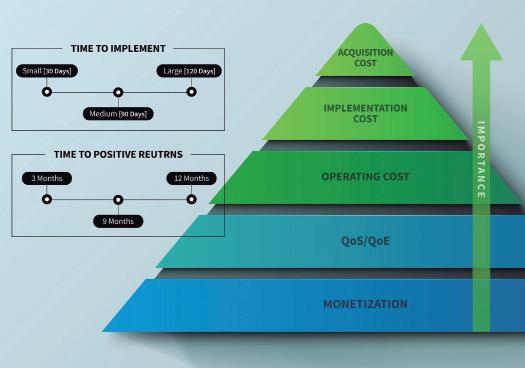
Sustainability, once a secondary consideration, has become central to cost management. Media companies face increasing pressure to reduce their carbon footprints, making energy efficiency a key element in TCO. Solutions like Zixi’s SDVP not only offer cost-effectiveness but also enhance sustainability by optimizing resource usage and lowering energy costs. By integrating sustainable practices into TCO analysis, companies can manage costs while contributing positively to environmental goals, positioning themselves as responsible industry leaders.
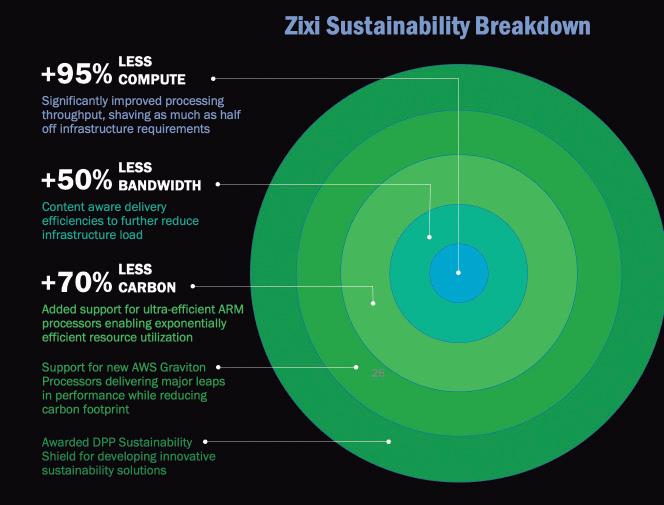
In this financially constrained environment, TCO analysis is not just about cost management—it’s about making informed strategic decisions that ensure long-term sustainability. A comprehensive TCO analysis enables media companies to evaluate the full scope of their investments, considering both direct and indirect costs.

When migrating to cloud-based solutions, companies must balance the benefits of scalability and flexibility against the risks of vendor lock-in and integration challenges. Informed decisions based on thorough TCO analysis help organizations navigate these complexities, ensuring they choose paths that align with both their financial goals and operational needs.
Automation and AI have emerged as powerful tools for optimizing TCO in the broadcast and streaming industry. By automating routine tasks—such as content distribution, quality control, and audience analytics—companies can reduce labor costs and minimize errors, contributing to lower overall operational costs. Additionally, AI-driven analytics provide insights into usage patterns and system performance, enabling more efficient resource allocation and reducing waste.
The integration of AI into media workflows not only cuts costs but also enhances content personalization and monetization strategies, crucial for maximizing revenue opportunities while controlling costs. However, the costs associated with implementing and maintaining AI systems must also be factored into the TCO equation. AI-driven solutions can also significantly enhance sustainability efforts by optimizing energy usage and reducing the need for physical infrastructure, further reinforcing the connection between cost management and environmental responsibility.
Looking ahead, TCO will continue to evolve as the media industry faces new financial and technological challenges. The increasing reliance on cloud services, the rise of remote production, and the growing importance of cybersecurity will all influence TCO considerations.
In a time when financial prudence is paramount, media companies must adopt a holistic approach to TCO, considering not just immediate costs but also the long-term implications of their technology choices. By doing so, they can ensure their investments meet today’s operational demands while positioning themselves for future success in a rapidly changing and financially pressured landscape.

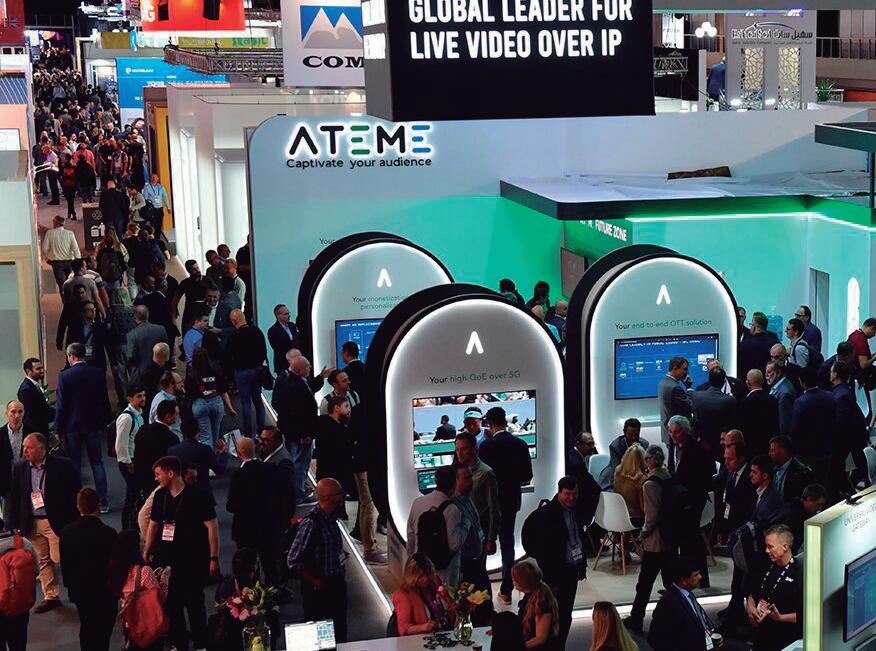
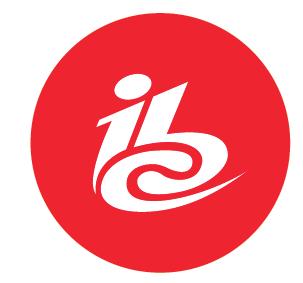
The International Broadcasting Convention (IBC) 2024 will be a bold moment in the day of the media and entertainment industry. From September 13-16, the RAI Convention Center in Amsterdam will showcase the latest in broadcast technology and the latest in content creation and distribution.
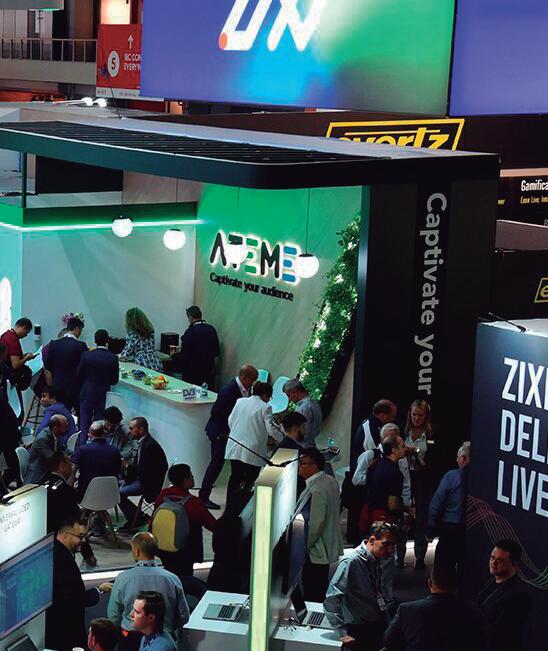
This year's edition is shaping up to be the biggest yet. Organizers' estimates of exhibitor space have already surpassed the previous record of 44500 square meters set in 2023. The addition of Hall 14 will accommodate the second Content Everywhere zone and the new zone for advances in AI technologies. With more than one
thousand eight hundred exhibitors on the cards, and a reasonable attendance of more than fifty-five thousand industry professionals, IBC 2024 will also take networking to another level.
The show floor will be a live interface with the latest trends including;
> Virtual production and real-time 3D graphics
> IP and hybrid workflows
> Streaming and Content Delivery Network (CDN)
> Production with AI technology
> Virtual audio solutions
> Energy- and spaceefficient transmitters
Companies such as Brainstorm, For-A, and Rohde & Schwarz are leading the way in these areas.
IBC 2024's conference program is packed with the industry's most critical issues over three days. On the agenda are executives from BBC Studios, beIN Media Group, Fremantle, Paramount Global and Virgin Media O2.
Some of the issues to be addressed include:
> Delivery of AI and human-machine interaction
> Monetizing FAST and Fast AS A Service business models
> Strategies for eliminating Fake News
> Covering sports production and the 2024 Summer Olympics in Paris
> Developments in XR and volumetric video fusion
> 5G fusion with legacy broadcast media
> Specialized zones and activities
At IBC 2024, there will also be zones focused on specific industry verticals:
> Content Everywhere: Covers both OTT and multi-platform distribution
> AI Tech Zone: Artificial intelligence-focused applications
> Showcase Theater and Innovation Stage:
Presentations and demonstrations on the show floor
> IBC Accelerator Media Innovation Program: Industry problem solving through project-based collaboration
There will also be the first ever IBC Talent Program, which will continue to focus on mentoring, diverse future talent and inclusion in the industry.
IBC 2024 is particularly significant for the broadcast and media industry. It will be at the forefront of discussions on generative AI, streaming solutions and new ways to monetize digital content. The convention will be a litmus test, highlighting
the technologies that will define the future of content creation and distribution.
For broadcast, news and media entertainment professionals, IBC 2024 is an exciting event where they can see a range of cutting-edge solutions and hear from some of the best in the industry. With a mix of high-level conferences, an extensive technology exhibition and networking opportunities, IBC 2024 is a must-attend event for anyone looking to stay ahead in the fastchanging environment of the broadcast and media industry.
TM Broadcast International magazine brings its readers this complete guide on what not to miss during this International Broadcasters Convention 2024:
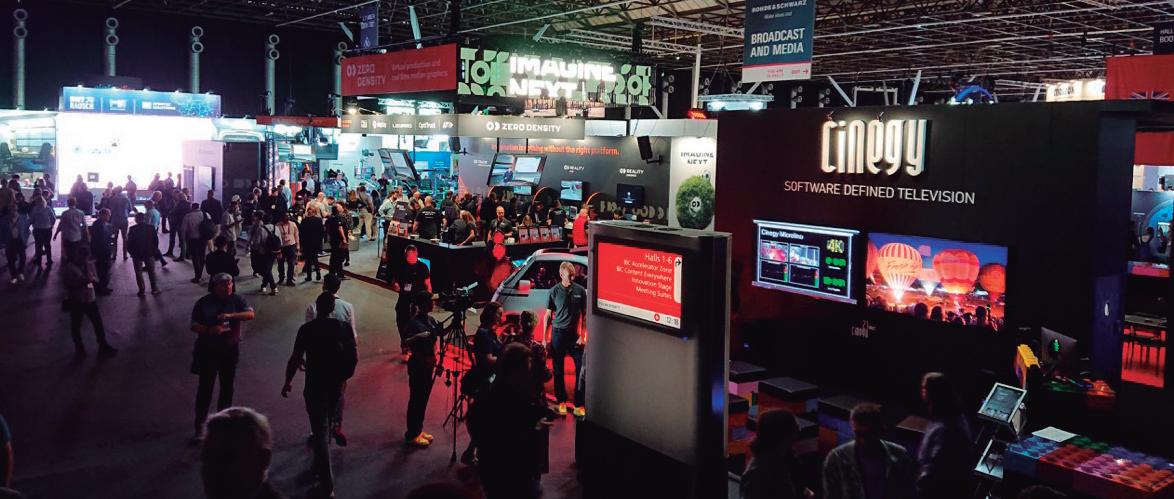
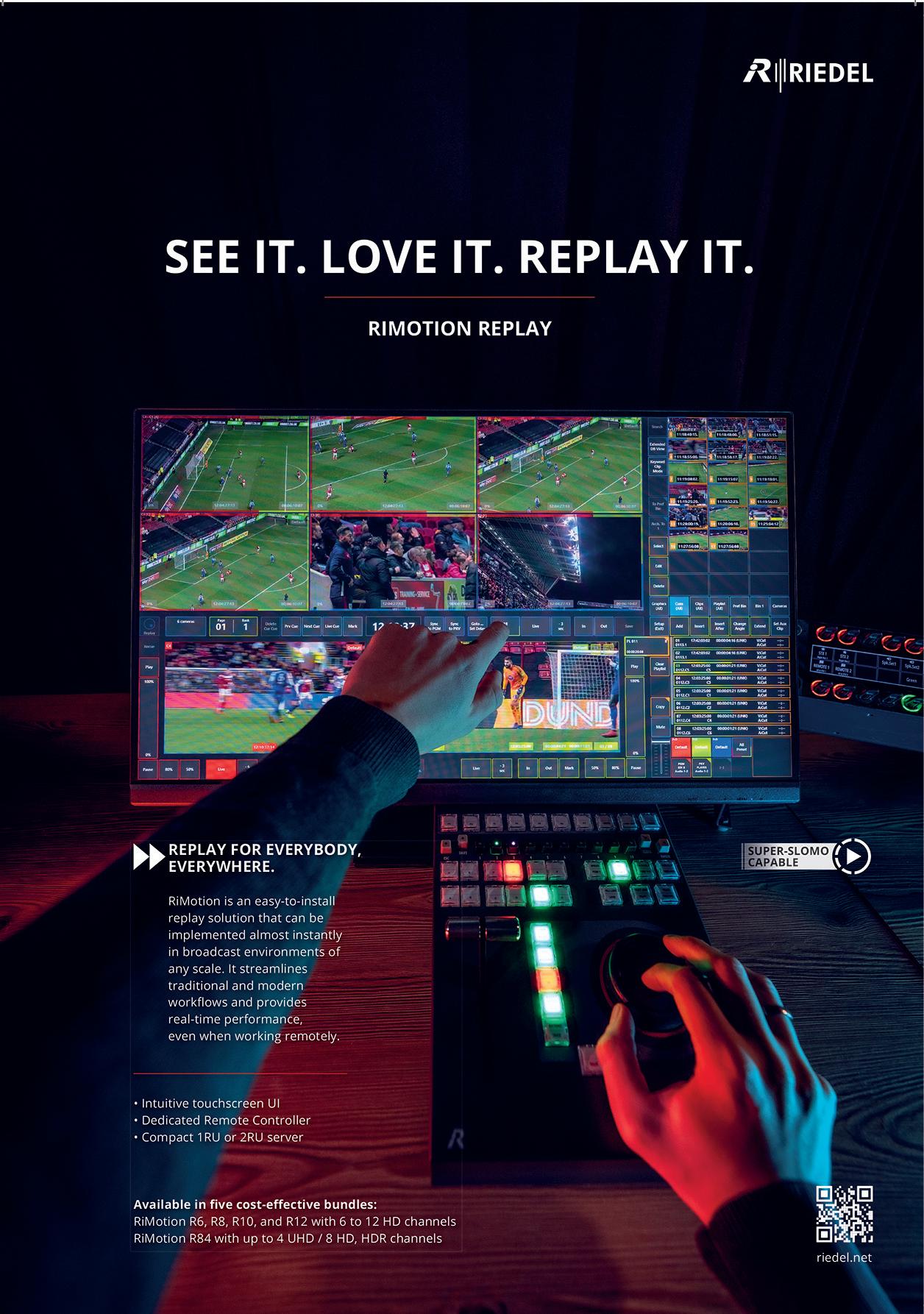
3 Screen Solutions (3SS) will showcase its latest advancements in personalized TV experiences. The company will demonstrate its 3Ready Product Framework, highlighting new AI-driven content discovery features and enhanced analytics capabilities for operators.
7fivefive (Booth 5.C90)
7fivefive will present its updated range of cloud-based production tools, including enhancements to its remote production platform. The company will also participate in a panel discussion on the future of distributed workflows in live production.
Absen will showcase its innovative range of LED display solutions for the broadcast industry. The exhibition will feature four zones:
> Creative Stage: Highlighting the Saturn (SA) Series 2.6 for indoor performance displays, the Pixel Reality (PR) Series 3.9 for virtual production, and the Mars (MR) Series 2.5 professional floor display.
> Conference Room: Featuring the Absenicon X108, a modular Micro LED product with advanced image optimization and collaboration capabilities, in partnership with Yealink’s MVC S40 camera system.
> Studio Solution: Displaying the Absenicon X151 for studio applications and the Absen Flex (FL) Series 2.5 for versatile installations.
> Hands-on Area: Allowing visitors to experience the Saturn Series, Polaris (PL) Series 3.9 PRO, Jupiter Pro Series (JP Pro) products, and the Neptune (NT) Series 1.9 for large screen solutions.
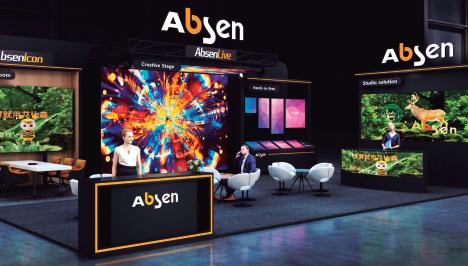
Accedo will highlight its video experience platform with new AI-powered personalization features. The company will also showcase its work on the ECOFLOW project, demonstrating sustainable streaming solutions as part of the IBC Accelerator Program.
AEQ will unveil its latest generation of audio mixing consoles and intercom systems. The company will introduce the Olympia 3 System, the TP9000 Series and The Solaris audio multi-codec gateway.

Agile Content will present its end-to-end OTT platform with enhanced analytics and monetization tools. The company will also participate in a session on maximizing revenue in the age of FAST and AVOD.
Akamai will showcase its edge computing solutions for broadcasters, highlighting new features for low-latency streaming and content protection. The company will also discuss ‘How Distributed Cloud is Driving Innovation in Digital Media’ at Room G109, on Saturday, 14 of September, from 11,00 to 12,30.
Appear will launch two new developments: a flexible, open software platform providing high-performance media processing for live production and a solution ecosystem comprising the company’s own capabilities alongside other industry-leading solutions, enabling sterling workflows. The firm will also highlight the HEVC performance of its X Platform, demonstrate its new JPEG XS module, capable of delivering 8 full HD channels per module, and launch a 100 Gb IP Gateway switch module.
Aputure will introduce new additions to its LED lighting range, focusing on energyefficient solutions for studio and location production. Attendants will be able to experience the all-new Infimat, try out Sidus
Link Pro in Aputure’s Virtual Studio and have a play with the Electro Storm series. The company will also host daily lighting workshops at its stand.
ARRI will showcase its new L-Series Plus LED Fresnel lights, offering up to 90% more light output than their predecessors, and Sinfonya and Arolla Aqua moving heads from Claypaky. The company will also present its latest camera and lens innovations for cinema and broadcast production, including the new ALEXA 35 Live - Multicam System, TRINITY Live and TRINITY 2 Pan Axis camera stabilizers as well as SkyPanel family.
Ateliere will present Ateliere Live, a software and cloud-native live production and editing platform, which GPU processing and remote proxy capabilities help reducing costs by up to 70% per hour of live TV produced. The company will focus on demonstrating not only how its solutions can reduce costs but how they improve efficiency in media workflows.
Ateme will highlight its latest video compression and delivery solutions, including advancements in VVC encoding and 5G broadcast technologies, as well as SaaS offerings, monetization tools, lowlatency live sports tech and immersive video/ audio capabilities. The company will also participate in a session on the future of video codecs.
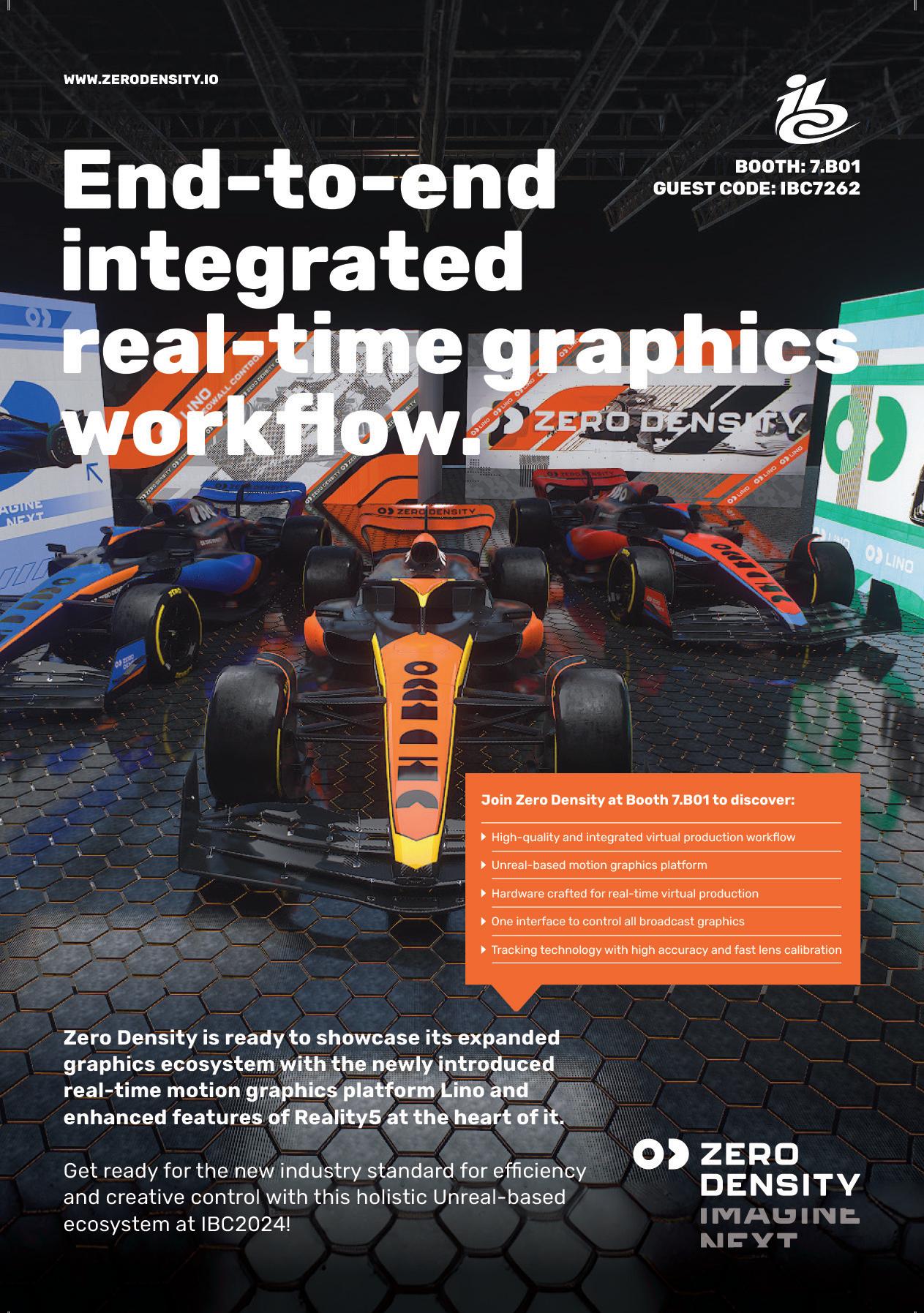
Atomos will introduce its new Ninja Phone, turning smartphones into high-end 10-bit recorders, monitors, and streamers for professional HDMI video cameras. The company will also showcase updates to its Shogun and Ninja lines of monitor-recorders.
AVID will demonstrate the latest enhancements to its Media Composer editing software, the new release of Avid | Stream IO™ and NEXIS storage solutions will be on display. The company will also exhibit its AI-powered speech-to-text technology, Avid Ada™ and will focus on showcasing its cloud-based production workflows and remote collaboration tools.
Amazon Web Services will highlight its comprehensive suite of cloud solutions for media and entertainment. The company will demonstrate new features in AWS Elemental MediaLive and MediaPackage, as well as innovations in machine learning for content production and distribution.
Black Box returns to IBC with enhancements to its Emerald KVM platform. The company will showcase its latest Emerald GE PCoIP Ultra gateway, designed to seamlessly integrate KVM systems with virtual machines and remote workstations. Visitors can expect live demonstrations of Black Box’s
software-based KVM solutions, highlighting their fl exibility in modern broadcast environments.
BCNEXXT will present its Vipe RT solution, a real-time graphics and virtual production platform. The system offers advanced capabilities for live broadcast graphics, augmented reality, and virtual set production. BCNEXXT representatives will be on hand to demonstrate how Vipe RT can enhance visual storytelling and streamline production workflows.
Bitmovin will highlight the latest version of its Bitmovin Player, showcasing advancements in low-latency streaming and multi-codec support. The company will demonstrate how its player technology can optimize video delivery across various devices and network conditions. Bitmovin experts will also participate in panel discussions on the future of video streaming and codec evolution.
Blackmagic Design is set to unveil several new products at IBC 2024, including updates to its popular ATEM live production switchers and DaVinci Resolve color grading and editing software. The company will also showcase its latest camera offerings,, as PYXIS, URSA Cine 12K, andfirmware 8.8 or 9.0. releases with hands-on demonstrations available throughout the show.
Brainstorm will publicly debut the newest features of Suite 6.1, which includes the latest versions of InfinitySet, Aston, and eStudio. Brainstorm will present the latest version of its InfinitySet virtual production solution, featuring enhanced real-time rendering capabilities and improved integration with Unreal Engine. The company will also demonstrate its Aston graphics creation tool, highlighting new features for broadcast and streaming applications.

Bridge Technologies will showcase VB258, an upgrade module for its existing VB120 and VB220 monitoring probe lines, both of which accommodate a range of network standards, including IP unicasts and multicasts, OTT/ABR streams, and a whole range of RF formats, as well as SRT and ASI. The new VB258 addition will allow monitoring of up to four independent RF inputs, supporting DVB-T/T2, ATSC1.0/ATSC 3.0, DVB-C, QAM-B and ISDB-T formats.

Broadcast will show its capabilities in both fi xed installations and mobile units. The company will also exhibit its Streamline concept, a range of outside broadcast designs from compact four-camera units to very large, expandable trailer designs.
Broadpeak will demonstrate its advanced CDN and video streaming solutions focusing in ad optimization, as Click2 interactive targeted ads, which enable viewers to interact with ads or Spot2Spot addressable TV, as well as end-to-end video streaming solution modular, supporting every step of the workflow; the company will also show its high-performance streaming technology available to streaming platforms that are building their own private CDN infrastructure, and the nanoCDN mABR.
Calrec will unveil the latest additions to its Argo audio mixing console range, featuring enhanced AoIP capabilities and intuitive touch-screen interfaces. The company will also demonstrate its Type R modular, expandable audio control system, highlighting its flexibility for various broadcast applications as well as limited edition LEGO® mixing console.
Canon will showcase its latest broadcast and cinema camera offerings, including new features as ‘Accelerated Capture’
imaging platform and new Dual Pixel
Intelligent AF and updates, of the following developments:
Broadcast Lenses: CJ27ex7.3B IASE T
Hybrid RF: RF 35mm F1.4L VCM
Cine Zoom Lens: CN7X17 KAS T
Cinema EOS System: EOS C400
Mirrorless Cameras: EOS R5 Mark II, EOS R1
Visitors can expect hands-on demonstrations, as well as insights into the company’s latest imaging technologies for live production and virtual production work fl ows.
CGI will present its Newsroom and Radio Solutions as CGI’s flagship newsroom solution, OpenMedia or the CGI dira, a comprehensive suite of tools for modern radio production. The company will demonstrate how its technologies can help broadcasters streamline operations and adapt to evolving content delivery models.
Chyron will showcase the latest version of its PRIME Platform, featuring enhanced sports graphics creation tools and improved integration with newsroom computer systems. The company will also present a new data and playout control, enhanced newsroom visual storytelling, and new cloud native innovations, demonstrating how broadcasters can leverage remote workflows for live content creation.
Cinedeck will demonstrate Cloudflow Hub, cloud-based platform designed to streamline media production process which integrates AI-driven live captioning, realtime translations, and transcoding, designed to streamline post-production workflows. The company will showcase advancements in its cineXtools insert edit technology, allowing for last-minute changes to finalized files without re-exporting, and will also exhibit ConneX Hub for media transfer and centralized management.
Clear-Com will present its latest intercom and communications solutions, as EHX-14, which introduces enhanced SIP integration on the E-IPA Card and redundancy with SMPTE 2022-7 to third-party AoIP devices. The company will also demonstrate Arcadia Central Station, now equipped with enhanced firmware, and the power of its Gen-IC Virtual Intercom.

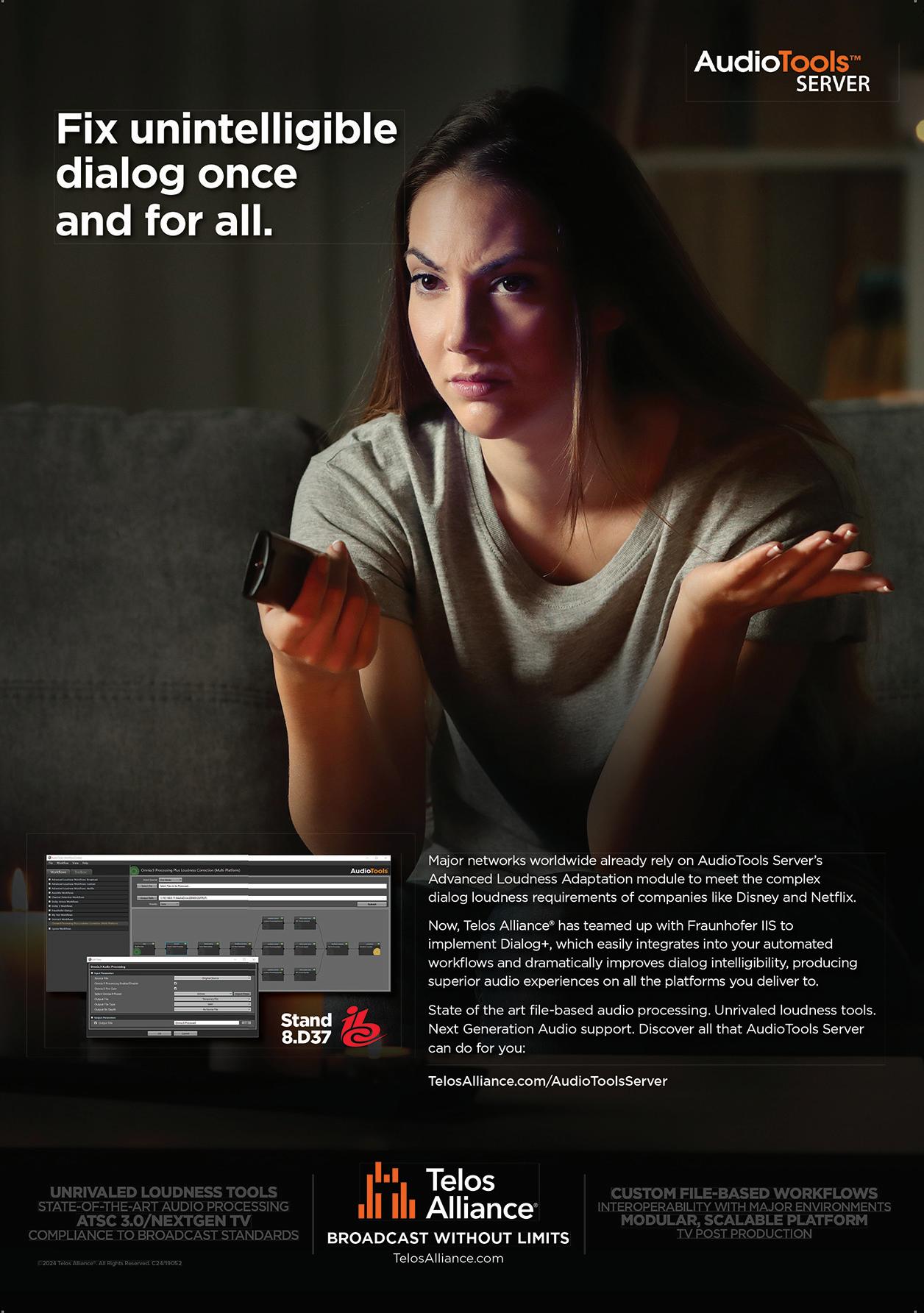
Dalet will present its cutting-edge media workflow solutions, focusing on AI-enabled news operations and sports content production and aiming to faster editing for workflows. Attendees can explore Dalet’s story-centric cloud-native ecosystem designed to enhance collaboration and streamline multi-platform distribution, as well as updates to Dalet Pyramid and Dalet Flex and new capabilities as advanced media processing and ingest and playout without limitations.
Dalet Pulse, a networking event, will also provide opportunities to connect with industry peers and discuss the latest trends and challenges in media technology.
DPA Microphones will highlight updates to its latest microphone solutions designed for high-quality audio capture in broadcast environments, including the 2017 Compact Shotgun Microphone, 2012 Compact Cardioid Microphone and 4055 Kick Drum Microphone. DPA will also demonstrate its installation microphones, emphasizing versatility and ease of use.
DVB will focus on its advancements in broadcasting specifications, showcasing its latest developments in DVB-I and DVB-DASH and demonstrating the latest DVB solutions for IP-based delivery and discovery of television. DVB will also present a discussion panel on DVB Native IP, “To OTT and beyond!
Where will DVB Native IP take the satellite industry?”, at Room E105 on 14 September from 14:30 to 15:15.
Evertz will demonstrate updates to its NEXX routing platform, which supports UHD and HDR technologies and is prepared for future IP expansions, and its new module, NEXX-10-JXS, for encoding and decoding. The company will also exhibit the RFK-ITXEHW-DUO platform, designed for easy format and resolution media conversion, as well as packaged solutions for Evertz’ Scorpion range.
EVS jumps to the 5th floor to celebrate 30 years of innovation in live production; the company will showcase developments as its recent launched media asset platform, VIA MAP 1.0, which will be soon a comprehensive ecosystem. These tools are designed to improve quality in live sports and entertainment production with high-speed, reliable performance.
Farmerswife will present the latest innovations in its Cirkus project management solution, as well as the new version of farmerswife!, the 7.1 one, which aims to streamline workflows and improve efficiency in media production environments. The company will unveil what to expect from the next farmerswife integration with Octopus Newsroom, announced recently.
Fujifilm will showcase its Fujinon HZK24300mm dual-format lens, supporting large image sensors with a versatile zoom range. The lens is designed for high-quality image capture in various broadcast and cinema applications, offering flexibility and precision. The Japanese company will also introduce a new storage solution: Kangaroo, which integrates all the hardware, software and LTO Ultrium tapes that the user needs to store long-term data securely and free of proprietary formats.
Focal Point VR will debut its interactive, shared live-streaming VR technology, allowing audiences to experience events
in a fully immersive 360° environment. The platform supports high-resolution VR video and offers features like gaze control and live multi-camera view streams, enhancing the virtual reality experience for broadcasters and viewers alike.
GatesAir will debut its Intraplex IP Link 200n codec, a two-channel model that expands upon the IP Link 100n. This new codec offers full duplex, two stereo-channel capabilities, enhanced with features like network path redundancy through Dynamic Stream Splicing (DSS) and 10-band audio processing. Additionally, the company will highlight developments as MPX Bridge, which provides a streamlined method for transporting

FM composite signals across IP networks, and an upgrade to its IPConnect transport technology, establishing ultra-low-latency IP transport for DAB networks as well as allowing broadcasters to transition from traditional ETI or satellite-based distribution to IP.

Globecast will highlight its advanced connectivity and hybrid cloud solutions, focusing on IP and cloud technology integration. The company will showcase its recent projects, including cloud-based production, the growth of the OTT service model and workflow management for major broadcasters. On Sunday 15 September at 12.45pm, CMO Jean-Christophe Perier will participate in a panel discussion: “Cloud strategies and the latest CE cloud use cases on cloud strategies” in which he will further explore these innovations.
Grass Valley will introduce its new range of wireless RF and 5G cameras for live production, the LDX 135 RF and LDX 135 5G, as well as updates to its LDX 100 Series cameras and K-Frame video production switchers, emphasizing integration with wireless transmission and cloud-based solutions. The company will also showcase its AMPP Platform, part of the GVMU ecosystem, which serves as a comprehensive media operating system.
Haivision will showcase its ecosystem of live video contribution solutions, including the Makito X4 encoders and Haivision Pro mobile transmitters, StreamHub receiver and distribution platform, its MoJoPro mobile camera app and the Hub 360 cloudbased master control solution These tools aims to enable broadcasters to deliver high-quality, low-latency video over various networks, supporting both on-prem and cloud production workflows.
HAND will present its latest innovations in digital media solutions, focusing on enhancing user engagement and content delivery through AI and machine learning technologies. Besides, the company will be leading ‘Digital Replicas and Talent ID: Provenance, Verification and New Automated Workflows, as new Accelerator Innovation Project; specifically focusing on the challenges related to talent authentication in the age of deep fakes enabled by Generative AI, the talk will demonstrate a practical way forward for consent-based digital replicas.
Hiltron will demonstrate its HMAM-XY motorized antenna mount, designed for tracking satellites and flying objects. The company will also promote its fieldupgradable motorization kits for existing antenna installations, offering enhanced tracking capabilities for broadcast applications.
Hitachi will feature its DK-H700 4K box camera a 4K box camera equipped with three 8.3 million pixel 2/3-inch CMOS sensors. It features an ND filter that enhances depth of field and minimizes moiré effects on video walls. Additionally, the company will present the SK-UHD7000-S2 from their SK-UHD7000 Series, which supports multiple formats and offers an optional 4K upgrade, allowing users to begin with 1080p and switch to 4K as needed.
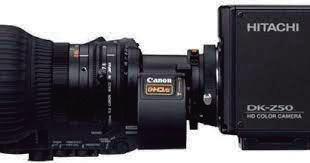
Icareus will present its new Icareus EPG Monitoring Solution, designed to optimize broadcasting operations, ensure regulatory compliance, and enhance the viewer experience. This development ensures EPG Data Accuracy by providing real-time monitoring and validation tools across channels and regions, streamline operations and enhance multi-channel and multi-region management.
Ikegami will showcase its latest broadcast production equipment, including the HDK-X500 HD portable camera system’s debut and new video monitors. The HDK-X500 HD, which performance

parameters include a horizontal resolution of 1,000 TVL (typical centre resolution at 5% modulation), 62 dB typical signal to noise ratio and F12 sensitivity, will take center stage, being capable of high framerate capture at 2x speed or low-frame-rate capture.
Imaginario AI, backed by Comcast and NVIDIA, will showcase its advanced multimodal AI solution, designed to analyze video, dialogue, and audio just like a human, including understanding the flow of time. The solution features a user-friendly interface with powerful tools for library search, chapterization, one-click clipping, and timeline sequence export. These capabilities greatly enhance efficiency in content repurposing, social media edits, daily content curation, creative brainstorming, and compliance editing.
InfiLed anticipates its biggest show until date, and will present optimizations at its STUDIO Series (STUDIO ceiling (AR Series), STUDIO Background (DBmk2 and Xmk2 Series), and STUDIO Floor (DFII)), featuring CBSF Technology for improved color accuracy and brightness, as well as better functions within its TV Studio Showcase , which now integrates ColdLED tech. The firm will also introduce MAGCUBE, a new cube-shaped LED solution, and will be showcasing its WT MIP 0.9 monitor setup along with a sample table featuring DBmk2 1.9, Xmk2 1.9, WPmk2 1.56, WT 0.9 MIP, and DBmk2 1.5 panels.
Additionally, InfiLed will host three days of talks, presentations, and panel discussions in collaboration with industry partners, with topics like next-gen storytelling for broadcasting, generative AI in media production or virtual production environments.
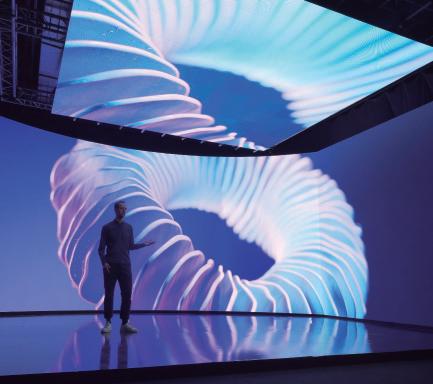
JUTEL will introduce the rebooting of the clip editor RadioMan Clipper to ClipperAI, at IBC 2024, and will demonstrate the latest version of its RadioMan automation system, featuring enhanced AI-driven content recommendations and improved integration with cloud-based services.
Kiloview will reveal three groundbreaking products: the P series (HOT) wireless bonding encoders, the new unified media center, and their extensive NDI Ecosystem with advanced AV conversion capabilities. Besides, the company will be showcasing the P3 real-world workflow.

Lawo will officially launch its HOME mc² DSP application, previously announced at NAB. The company will also demonstrate enhancements to its .edge gateway platform and introduce the new crystal broadcast console, making its European trade show debut: an IP-native broadcast mixing system built on open RAVENNA/ AES67 Audio-over-IP standards, and compliant with SMPTE ST2110-30/-31 for audio and ST2022-7 for redundancy. It’s powered by the Lawo Power Core Engine, and offers expandable I/O options, supporting AES67, MADI, analog, AES3, and Dante audio sources and destinations.

V-Nova will highlight the latest advancements in MPEG-5 Part 2 LCEVC (Low Complexity Enhancement Video Coding) technology. The company will showcase how LCEVC can improve video quality while reducing bitrates by up to 40% compared to native codecs, and will showcase how its partnership with Amlogic enables optimized implementations of LCEVC on SoCs.
Leader will demonstrate its new ZEN-W Series, comprising the LV5600W waveform monitor and LV7600W rasterizer. These instruments feature WebRTC capabilities, allowing secure remote control and monitoring from web-connected devices. New features in the ZEN-W Series include Full Range SDR displays for various metrics such as black error, CIE, gamut error, histogram, and audio/video timing offset. Enhanced production capabilities are offered through CINELITE and CINEZONE, with new presets for ARRI and RED cameras. Additionally, the series supports bi-directional HDR/SDR conversion and 3D color LUT import via USB, simplifying live and post-production workflows.
Limecraft will introduce its enhanced Media Intelligence platform, which combines AI with human input to achieve superior content indexing and metadata generation. The company will also showcase its Cloud Connector, a secure local software agent that facilitates seamless content management and sharing between onpremises and cloud-based workflows.
LiveU will present the next-generation LiveU Studio, a fully cloud-native live video production solution, supporting LiveU Reliable Transport (LRT™) natively. This new solution features improved usability with intuitive controls and a richer multi-cam toolset and supports cloud-based workflows
that allow a single operator to manage synchronized feeds from multiple sources, HTML-based graphics, and instant multiangle replays. These advancements provide new monetization opportunities for sports and other live events.
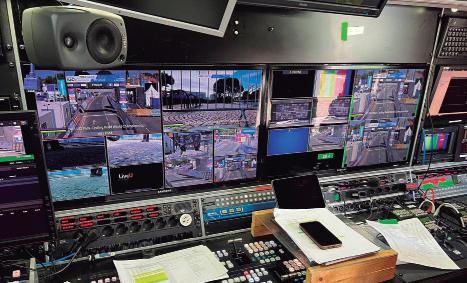
Magewell will unveil the latest addition to their USB Capture family: the USB Capture HDMI 4K Pro. This new model represents an upgrade from the existing USB Capture HDMI 4K Plus. It supports 4K video capture at 60 frames per second, utilizing 20Gbps USB 3.2 Gen 2x2 for high frame rates and color accuracy, and works with older USB interfaces, capturing lower video resolutions as needed. The device also features Magewell’s free USB Capture Utility software for confi guring capture settings, updating fi rmware, and managing audio options.

Magnifi by VideoVerse will showcase advanced tools for content regionalization and personalization, as Automated Local Language Content Generator, Geogating Feature and design-Systems-As-A-Service (DSaaS), as well as AI-Based Studio Editor.
The company will also present a new Adobe Premiere Pro extension for instant access to indexed libraries, a partnership with Linius Technologies for merging live and archive content, and discuss AI trends at the IBC2024 Content Programme.
Additionally, Magni fi will participate in an IBC Accelerator session focused on predictive video and audio generation for live events.
MainConcept will showcase its latest codec libraries and SDKs, optimized for next-generation video workflows. The company will demonstrate advancements in AV1 encoding, HEVC optimization, and low-latency streaming solutions. The company will also present its cloud-ready transcoding solutions for OTT and broadcast applications, as the ones recently developed as a result of the company’s partnership with Akamai Linode, FFmpeg plugins and Pro Camera Transcoders for Sony and Panasonic.
Marshall will debut its new CV625 PTZ Camera, which uses AI facial learning
to automatically track, follow and frame presenters. Additionally, the PTZ features a high performance 8-Megapixel 1/1.8-inch sensor and delivers up to 3840 x 2160 resolution at 60fps with an 83-degree horizontal angle-of-view. This new Marshall’s development provides versatility for various applications including HDMI, 3G-SDI, Ethernet, RTSP streaming and USB 3.0. The company will also showcase its latest lineup of broadcast monitors and converter products.
Mediagenix will showcase its advanced scheduling automation, highlighting how it enables management-by-exception for effi cient audience engagement across on-demand, FAST, linear, and social channels. The company will also present smart solutions for content strategy and content value management, demonstrating their expertise in seamless content orchestration that remains invisible to viewers while enhancing engagement.
Mediaproxy will showcase its LogServer compliance logging and monitoring system, now featuring enhanced support for OTT and streaming platforms, along with a redesigned clip processing and publishing engine, and new additions to the Monwall multiviewer. The company will also demonstrate its integration with Skyline Communications’ DataMiner
platform, o ff ering broadcasters comprehensive data aggregation and orchestration capabilities.

Mo-Sys will showcase innovative solutions for virtual production including MoViewer, a cost-effective, fully autonomous system that integrates with existing studio infrastructure. It provides AI-assisted real-time previews of all cameras, and aim to revolutionize multi-camera production. Also, Mo-Sys will exhibit a new addition to Mo-Sys’ robotics line, the Miniature Remote Head, designed for handling small payloads with speed and precision, and MoCaptury, markerless motion capture technology offering tracking without the need for suits.

Additionally, Mo-Sys will host Mo-Mentum roundtables, featuring expert discussions on comprehensive solutions and customer success stories. Hands-on workshops will demonstrate their latest technologies, including real-time virtual production with green screen and LED using StarTracker Max and VP Pro software in Unreal Engine.
MRMC is set to showcase an impressive lineup of advanced motion control and broadcast robotics solutions, as Cinebot Max which, building on the innovative PushMoco technology, features a 1.75m arm capable of manual positioning; Cinebot Mini and StudioBot LT, which will make its debut at IBC 2024, tailored for permanent or semi-permanent studio setups. Besides, Orion and Atlas Sliders, equipped with RED Komodo cameras, and PTZ Mover Kit will also be showcased.
NAGRA will showcase its latest innovations in streaming security, consumer engagement, and cybersecurity. They will highlight advanced device security strategies, AI-powered monitoring, and anti-piracy solutions, including live sports monitoring and server blocking. In consumer engagement, NAGRA will present hyper-personalized experiences through AI-driven recommendations and support. Additionally, they will introduce new o ff erings in their NAGRA Scout solution suite, focusing on cybersecurity
for homes and small businesses, enhancing both protection and customer loyalty while providing valuable data insights.
Net Insight will demonstrate its Nimbra platform, now featuring enhanced support for HEVC compression and the new Nimbra Connect iT, which offers sports content distribution from point of production to consumer, fully redundant internet delivery for tier 1 sports and seamless integration of cloud IP and baseband SDI. Net Insight will also present its latest developments as IP Media Trust Boundary for secure media delivery, and scalable media delivery solutions for global demands and open and interoperable media transport.
NETGEAR will showcase its latest lineup of M4350 series managed switches, optimized for AV-over-IP applications. The company will demonstrate how these switches can simplify the deployment of NDI and Dante networks in broadcast environments.
Ooona will introduce new features for its cloud-based media localization management platform. The company will showcase its QA Manager tool and the OOONA Testing Platform, designed to streamline quality control processes for subtitling and dubbing work fl ows. Ooona will also present its expanded
educational platform, o ff ering courses and webinars for media localization professionals.
Open Broadcast Systems will showcase its latest software-based encoders and decoders for video and audio transport. The company will demonstrate how its solutions enable low-latency contribution of sports, news, and linear channels over various networks, including public internet, 4G/5G, and Low-Earth-Orbit Satellites. A highlight will be the new 5G Flyaway system,
designed for sports and linear channel transmission using 5G and LEO bonding technology.
Panasonic will present its updated range of professional cameras and production solutions. Attendees can expect to discover a new IP studio camera, will see a ST 2110 workflow demonstration featuring studio cameras, PTZs, and the Kairos IT/IP platform, as well as the latest enhancements to the Media Production Suite, including an AIdriven chroma key system that eliminates the need for a green screen.

On Friday, September 13th, the company will introduce to the press and media all these developments, from 17:30 to 18:30 at the Topaz Lounge on the 1st floor.

Perifery, a division of DataCore, will introduce its all-in-one workflow solution designed to streamline storage, asset management, and AI capabilities. This solution addresses challenges like siloed content, duplicated efforts, and the growing need for automated workflows. The company will demonstrate how media and entertainment organizations can simplify asset management, automate routine tasks, and optimize search, allowing teams to concentrate on content creation.
Phabrix will showcase a wide range of test and measurement solutions designed for every stage of the production and broadcast chain. Highlights include the LT4670 “True Hybrid” SDI/IP Synchronous Test Generator, offering Genlocked signals and dual PTP generation, and the QxL rasterizer, fully equipped for 10G/25G IP and supporting JTNM TR 1001-1:2018 and ST 2110 standards. Also featured are the Sx TAG portable tool for ST 2110 and ST 2022-6 streams, the QxP
portable waveform monitor with 12G-SDI and 25G-IP support, and the Rx Series rasterizers for 2K/3G/HD/SD diagnostics. The company will also demonstrate the Qx and QxL systems for 12G-SDI and 25G IP analysis, alongside the SxE handheld device with advanced physical layer analysis.
PlayBox Neo will showcase its fully integrated television channel management, graphic branding, and playout solutions. The suite, managed from a single desktop, includes Media Gateway for signal reception, transmission, and conversion; AirBox Neo-20 for automated 4K-UHD content streaming; Capture Suite for multi-channel ingest control across servers via a web interface; and Channel-in-a-Box, an all-in-one solution for UHD, SD, or HD channels. These tools provide efficient, scalable workflows in a cost-effective package.
Pliant Technologies will unveil its latest wireless intercom solutions, including the CRP-C12 Compact Radio Pack. This fully-featured intercom pack offers dual conference support with simultaneous dual listening options. The company will also showcase the updated CrewWare 2.0 software, improved SmartBoom LITE headsets with a new rotatable earcup and field-replaceable cable, and the new PHSIEHU in-ear headsets. Additionally, Pliant will introduce the Single RT PAC-RTM-SMU universal mounting bracket, offering flexible mounting options with various industrystandard thread sizes.
Proton will showcase its Proton CAM, touted as the world’s smallest camera. This compact 1.18-inch sensor camera offers 12-bit technology and can output up to 1080p60 in Rec.709 or Rec.2020. Weighing just 24 grams and measuring 28x28mm, the Proton CAM is ideal for drone cinematography and close-up sports imaging. Additionally, Proton will launch its Proton Flex, a miniaturised camera that uses a flexible design to maximise performance in any live production that requires heat and space management.
QuickLink will unveil QuickLink StudioEdge™, which integrates remote guests from major video conferencing platforms such as Microsoft Teams, Skype, and Zoom into live productions, enhanced by cutting-edge AI technology. It supports broadcast-grade outputs including SDI, NDI, and ST 2110. The system features QuickLink StudioCall technology, enabling real-time group conversations, panel discussions, and live interviews with remote participants from around the globe.. Additionally, StudioEdge™ provides a browser-based remote-control interface via QuickLink’s cloud platform, facilitating control from any location worldwide.

Qvest will present a range of developments designed to enhance media workflows and streaming strategies, for attendants to discover the power of Applied AI with Qvest’s latest innovations. The company will showcase its innovative Composable OTT approach, which offers enhanced modularity, scalability, and adaptability in OTT platform strategies, and which key highlights include:
> Makalu Product Family: Enterprise Automation now offers greater flexibility for major broadcasters.
> Studio Server Clipbox: now supports expanded connectivity with third-party systems, enhancing customization and capabilities for ingest and studio playout.
> TVXRAY: elevating viewer engagement with fully automated, AI-generated highlight reels of key moments from live sports broadcasts.

Riedel Communications will demonstrate its latest innovations in network solutions and remote production technologies, such as High-Quality SRT Network and its global
X-SRT gateways that utilize the company’s private IP backbone for quality signal routing from SRT gateways to broadcast centers, CDNs, and public clouds. Also, the private IP backbone, now consisting of 40+ nodes across 75+ countries and 1,400+ cities, will be featured. Riedel will present advancements in their remote production offerings, including the Riedel Networks Media House located in Cologne Loevenich. The company is expected to showcase updates to their intercom solutions and improvements to Riedel’s MediorNet realtime network for video, audio, and data signals may be presented.

The RIST Forum will promote the adoption of the Reliable Internet Stream Transport protocol, demonstrating its benefits for high-quality video contribution over unmanaged networks; the association will be present at its members’ booths.
Rohde & Schwarz will showcase a range of advanced broadcast and transmission technologies aimed at enhancing efficiency and sustainability, as R&S®TH1 transmitter series or the R&S®TXV9evo transmitter
family, designed for DAB+. Additionally, the company will unveil new advancements in 5G broadcasting, a DAB+ efficiency calculator, the R&S®PKU100 satellite uplink amplifier and the R&S®GSACSM Realtime Satellite Monitoring solution. The company will also introduce service solutions for broadcast network operators and other developments such as PRISMON multiviewer, the playout automation solution Gallium and StreamMaster or R&S®VENICE for live and production ingest.
ROE Visual will showcase its latest solutions for broadcast and virtual production environments. The company will demonstrate its high-resolution Black Pearl BP2V2 panels, the Ruby RB1.5F, equipped with a high-contrast flip chip LED, and Ruby RB1.9BV2 as well as Black Marble LED Floor (BM2) for immersive visual experiences.
Debuting at IBC will be the Coral CR1.2 panel, a significant advancement in broadcast-grade HD-LED technology. Utilizing COB (Chip on Board) LED technology, it offers high contrast, a wide color gamut, and remarkable color accuracy. With a brightness of 1000 nits, a refresh rate of 7680Hz, and an 8:9 aspect ratio that supports native 4K or 8K resolutions.
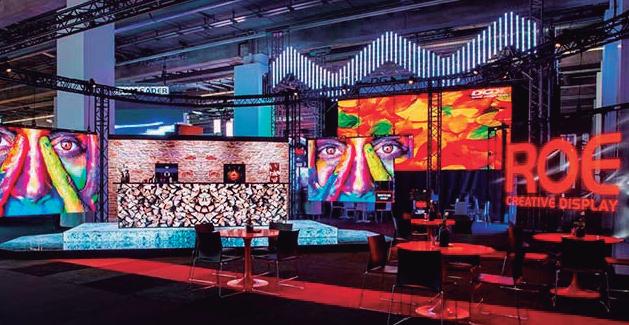
SAPEC will showcase the latest advancements in broadcast technology with a focus on their innovative CornerCam system, which includes two cameras with HD 1080i capabilities and remote control features. It has been successfully tested in collaboration with the Spanish RFEF and is designed to enhance video refereeing tasks.

Sennheiser will unveil several cuttingedge audio solutions designed to enhance broadcast and production environments, such as AMBEO VR Mic, which captures 360-degree spatial sound, or the Digital 6000 Series. The company will also showcase the Sennheiser SL Bodypack transmitter, providing audio clarity and flexibility for live performances and presentations. Additionally, there will be demonstrations of Sennheiser’s Evolution Wireless Digital family and the new EW-DP series for broadcasters and filmmakers.
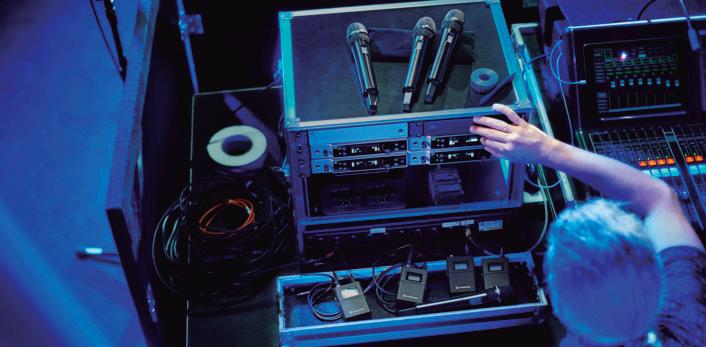
Signiant will highlight its SaaS platform that connects over 50,000 media companies. The company will demonstrate how broadcasters can automate content exchange, discover media assets across distributed storage locations, and provide remote teams with seamless access to media assets. Signiant will also showcase its new Intelligent Ingest solution, developed in partnership with TMT Insights, designed to simplify large-scale media ingest.
Simplestream will present its latest advancements in OTT and streaming solutions. The company will demonstrate new features in its end-to-end streaming platform, including enhanced personalization capabilities and improved content discovery tools. Simplestream experts will be on hand to discuss how broadcasters can optimize their streaming strategies in an increasingly competitive market.
Shure will showcase its cutting-edge wireless solutions for broadcast and content creation. Highlights include the new SLX-D Portable Digital Wireless Systems and the MoveMic Wireless Lavalier System for mobile creators. Shure will also introduce the SLXD5 Single-Channel Portable Digital Wireless Receiver and the SLXD3 Plug-On Digital Wireless Transmitter, as well as the ADX5D dual-channel portable wireless receiver and the MXA920 ceiling array microphone.
SSL will demonstrate its latest audio production solutions, including updates to its System T broadcast platform. The company will showcase SSL’s nextgeneration IP-based broadcast production platform, System T and will introduce the S400 console, tailored for live-to-air broadcast applications in a compact and cost-effective format.
Additionally, the company will showcase its System T Cloud, SSL’s most advanced broadcast audio solution running in the public cloud. It features 256 paths of fully processed audio and offers hands-on control via any System T surface, providing a powerful and flexible solution for modern broadcast needs.
Sony and Nevion will present their latest developments in IP-based live production solutions. Highlights include enhancements to the Virtuoso software-defined media node, including new HEVC media functions and 100G aggregation capabilities. The companies will also demonstrate advancements in their VideoIPath media orchestration platform, featuring new cloud orchestration extensions and enhanced monitoring support.
Spherex will showcase its SpherexAI platform, a comprehensive solution for generating age ratings and ensuring video
content complies with local regulations and cultural norms for global markets. The company will demonstrate how its technology can analyze content for global compliance in minutes, providing costeffective solutions for media companies expanding their international reach, on September, the 16th, at 12.15.
StreamGuys will unveil their new ultra-low-latency streaming service, designed to enhance live sports events by synchronizing video and audio for an improved second-screen experience, which addresses the delay between live game action and audio/video streams, ensuring synchronicity for a seamless viewing experience. The company will exhibit its contribution network, an enterprise-level streaming media ecosystem that ingests streams, using low-latency protocols to eliminate delays, as well as SGrewind, a new feature that allows listeners to rewind and return to previous moments in the game, and CEA-608 caption support.
Tedial will demonstrate its latest media asset management and workflow solutions. The company will showcase new features in its smartWork media integration platform, including enhanced AI-driven metadata extraction and improved content discovery tools. Tedial will also present case studies highlighting successful implementations of its solutions in major broadcast environments.
Telemetrics will showcase several developments at IBC 2024, celebrating its 50th anniversary in the industry. The company will present a range of new products and enhancements designed to improve studio operations and camera control as Wireless OmniGlide Robotic Roving Platform and AI-Assisted Software Enhancements within OmniGlide system. Additionally, Telemetrics will introduce a New Trolley System with improved performance and probably will be exhibiting its RCCP-2A Robotic Camera Control Panel.

Telestream will showcase its comprehensive range of solutions for video quality monitoring, test and measurement, and content production workflow orchestration. The company will demonstrate its platform Lightspeed Live Stream, its media processing platform Vantage, Telestream Cloud and tools as iQ Analytics and CaptionMaker. Telestream experts will be on hand to discuss strategies for optimizing content quality and delivery in multi-platform environments.
Telos Alliance will demonstrate its latest audio processing and routing solutions for broadcast. The company will showcase advancements in its Axia IP-Audio networking technology and new features in its Omnia audio processors. Additionally, highlights will include Telos Infinity IP Intercom, Telos Virtual Radio, the Axia Quasar IP Audio Console, as well as its comprehensive portfolio of Audio Over IP (AoIP) solutions, designed to streamline audio transport and management across networks.

Veset will present its cloud-native playout solutions, designed to enable broadcasters to launch and manage channels more efficiently. The company will demonstrate new features in its Nimbus platform, including enhanced graphics capabilities and improved integration with third-party MAM systems. Veset will also showcase case studies highlighting successful implementations of its technology in various broadcast environments.
The Videndum Group will showcase its latest innovations in wireless video transmission and monitoring solutions. Teradek will demonstrate advancements in its 4K HDR wireless video systems, while SmallHD will present new high-brightness monitors designed for on-set and location production. The group will also highlight integrated solutions that combine technologies from its various brands to create comprehensive production ecosystems.

Vislink will be showcasing its latest innovations in RF, 5G, AI-powered and remote production solutions including:
> Miniaturized transmitters for PoV/ drone / bodyworn applications
> Hybrid IP / COFDM solutions
> Private 5G networks for live events
> Cloud-based remote production solutions
> AI-automated live sports and in-studio systems
> Airborne downlinks for ENG and live events
Vizrt will demonstrate its latest advancements in real-time graphics, virtual studios, and newsroom solutions. The company will showcase the TriCaster® series, known for its seamless integration and dynamic content creation capabilities, and its real-time production tools, designed to meet the demands of modern broadcasting, enhancing audience engagement and production quality. Vizrt will also present case studies highlighting innovative uses of its technology in major broadcast and sports production environments.

Vubiquity will present its comprehensive content services and technology solutions. The company will showcase its Contentas-a-Service off ering, which streamlines content delivery and monetization, and will also highlight its cloud-based solutions designed to improve the scalability and fl exibility of content work fl ows. Vubiquity experts will be available to discuss strategies for addressing challenges for telcos through its super aggregation and subscription bundling solution.
Wise will present its WisePlay OTT platform, a robust solution for managing and delivering video content across multiple devices and networks. This platform offers seamless integration, scalability, and advanced features like content protection and monetization options. The company will also introduce WiseOTT Middleware, a versatile and customizable solution that supports a wide range of devices.
Worldcast Systems will present its latest innovations in audio and RF transmission solutions: Audemat MC6, Ecreso FM AiO Series , SmartFM, Virtual APT IP Codec, Kybio, APTmpX. The company will showcase advancements in its Ecreso FM transmitter line, including improved energy efficiency and enhanced remote monitoring capabilities. Worldcast will also demonstrate new features in its APT codec range, designed to optimize audio quality and reliability in contribution and distribution applications.
Zattoo will demonstrate its end-to-end TV-as-a-Service solutions for network operators and media companies. Also, the company will showcase its new StreamAPI, set to redefine how content providers integrate streaming into their platforms. This API allows for seamless integration of live TV and on-demand content, offering greater flexibility and control over the user experience. Zattoo experts will be available to discuss strategies for launching and managing successful streaming services.
Zero Density will introduce a new motion graphics platform, Lino, which integrates Unreal Motion Design features into a cohesive platform and works seamlessly with Reality5 and Reality Hub to reduce complexity. The company will showcase new features in its purpose-built hardware platform, EVO II, and will also demonstrate its AI-powered talent tracking solution, Traxis, offering ultra-accurate camera and talent tracking, along with lens data management.

Zixi will demonstrate how Zixi Enable Network, which includes over 1,400 media companies and 400 technology partners, enables broadcasters, OTT providers, and sports leagues to reach global audiences efficiently. The company will also show new features as an analysis of large-scale IP delivery applications, Total Cost of Ownership (TOC); Market Switching, which allows content distributors to switch content based on ESAM/ESNI for regionalization or blackouts, integrating traditional workflows into IP workflows; high-performance networking as a result of using DPDK; Dynamic Latency and Error Concealment for live IP transport, Timeline Normalization and Smooth Live Midroll Insertion, and Dynamic HTML Overlays for transitioning to cloudbased operations without additional onpremises hardware.

Additionally, Zixi will participate of activities such as the Devoncroft Executive Summit, event that opens the show on September, 12, with speakers SVP John Wastcoat and CEO Gordon Brooks at the Tuschinski Theatre, or, on September, 15, a panel discussing how Zixi and Verizon collaborate to deliver NHL content over 5G networks moderated by CEO Gordon Brooks.
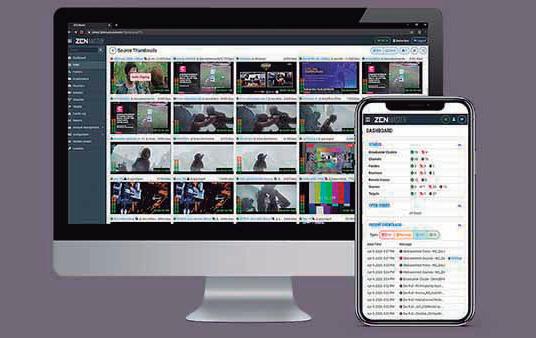

The COP28 UN Climate Change Conference, a pivotal event on the global environmental calendar, presented unique broadcasting challenges and opportunities. Held in Dubai’s expansive Expo City, the conference saw an unprecedented assembly of over 85,000 participants, including more than 150 heads of state and government, across 285 press conferences and 576 events. With the eyes of the world on this gathering, there was a critical necessity for seamless and comprehensive news coverage.
The logistics and planning involved in providing broadcast coverage for such a vast array of events were monumental. Identity, a global live events agency, was contracted to serve as overall producers.
Identity then turned to NEP Bow Tie, a division of NEP Group, Inc. that’s renowned for its expertise in managed video services for government organizations, to provide the technology solution.
The event’s vast scale, spanning two distinct zones within Expo City, presented unique challenges.
The Blue Zone, designated for official meetings, and the Green Zone, open to the public, required nuanced coverage strategies to comprehensively capture the essence of the discussions and the vibrancy of the community engagements.
According to Gareth Phillips, Head of Engineering and Technology for NEP Bow Tie, “It became quite clear early on, with the scale of the events, that coverage was going to be a connectivity challenge.”
The challenge was multifaceted, demanding high-capacity, reliable, and flexible connectivity solutions across this vast site.
In response, NEP Bow Tie turned to Grass Valley’s LDX 150 cameras with NativeIP functionality, a pioneering solution offering direct IP network connections to the camera, removing the need for a traditional base station.
This innovation allowed for the distribution of camera heads across the venue without the need for the heavy infrastructure normally associated with traditional setups. The NativeIP LDX 150 incorporates support for both SMPTE ST 2110 and AMWA NMOS standards within the camera head itself. This allows the camera to be connected to the 2110 network in a redundant fashion, removing the need for the traditional camera control unit (CCU).
By removing the CCU, significant reductions in shipping costs and CO2 emissions were achieved. This strategic decision also resulted in a notable decrease in the rack space, power
consumption and cooling required on-site, which aligned with the conference’s environmental goals.
The cornerstone of the coverage strategy was reliability. The deployment of 52 Grass Valley LDX 150 cameras across the venue was underpinned by a meticulously planned network architecture. With full red and blue network resiliency, the architecture was designed to withstand a broad variety of unexpected events. There was a particular focus on security, guaranteeing uninterrupted coverage even in the face of potential disruptions.
The final destination of the camera signals was a master control room and nine production galleries, each with a Grass Valley Kahuna switcher. In addition to the 52 LDX 150s, there were a number of PTZ and Grass Valley RF cameras. Each of the LDX 150 cameras appeared on the network as a specific device and each was
configured using NMOS. “Due to the scale of the event, we had some concerns at the outset,” said Phillips. “Dubai is a tough environment due to temperature,” he continued. “But once the cameras were configured, they were absolutely rock solid. By and large, the cameras made the things very easy.”
The robust network infrastructure, coupled with the advanced features of the LDX 150 cameras, provided a stable and reliable platform for live broadcast throughout the event.
To support the large-scale camera deployment, the implementation of over 140 km of broadcast cabling within the venue posed a significant challenge. With a strong emphasis on maintaining the venue’s aesthetics, NEP Bow Tie opted for a structured cable approach rather than installing a temporary cable rig based on SMPTE Fibre.
In collaboration with the local telecommunications provider, Etisalat, NEP Bow Tie circumvented the logistical burdens associated with traditional SMPTE fibre cabling. They installed a 12-strand tactical single-mode fibre cable featuring LC connections. This method eliminated the need to ship heavy SMPTE fibre cable in and out of Dubai.
A critical component of the coverage’s success was the use of Grass Valley’s new Creative Grading solution. To support the central management of the cameras, all of the LDX 150 cameras were connected to a CCS One Camera
Control Server, which in turn was connected to a suite of Creative Grading Panels, located in a central racking gallery.
Operated by a team of 25 vision engineers working in shifts, the Creative Grading Panels allowed for real-time remote adjustments to the camera settings and finetuning of the picture output throughout the weeks of production. The flexibility and control offered by the Creative Grading solution made it easy to paint the cameras and was very well received by the team of shaders, many of whom had not used the solution before.
Each position controlled multiple cameras, allowing the team to make real-time adjustments and seamlessly transition between different lighting conditions.
According to Phillips, “The team picked it up very quickly and really liked the solution”.
Daragh Bass, Director of Sales for Grass Valley Northern Europe, reflected on the event’s success and its broader implications:
“This remarkable blend of technology and environmental consciousness at COP28 not only set a new standard for live event broadcasting but also underscored the importance of sustainability in our industry. The collaboration between Grass Valley and NEP showcases both companies’ commitment to innovation in overcoming challenges and paving the way for future events to leverage technology in service of both broadcasting excellence and environmental stewardship.”
“The live broadcast of COP28 was an extremely complex project, with no room for error. The collaboration between Identity and NEP, with their innovative and technically advanced systems and equipment, coupled with an experienced and expert team, ensured this historic event was successfully transmitted into millions of homes around the world”, said Mandy Keegan, Director of Media & Broadcast, Identity at COP28.
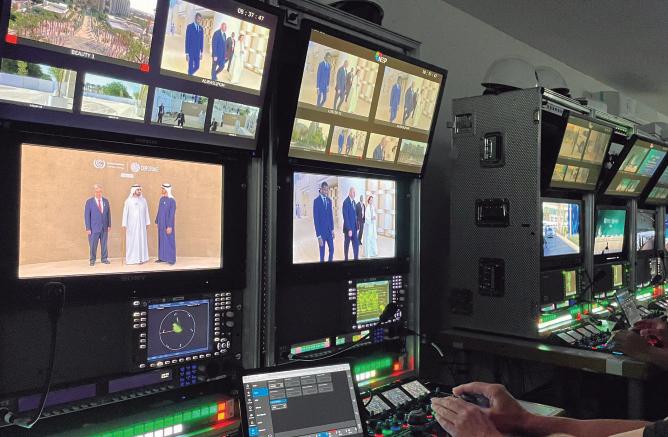

Lucinda Meek, Chief Financial Officer of the International Association for Broadcast & Media (IABM), plays a key role in guiding the organization’s financial strategy as it navigates the rapidly evolving media technology landscape.
IABM is dedicated to informing, connecting, and supporting its members through a comprehensive range of activities, including business intelligence publications, networking events, and educational programs. Under Meek’s financial leadership, the association continues its mission to empower the global MediaTech community by fostering innovation and adapting to emerging technologies such as AI and digital transformation.
Lucinda Meek, Chief Financial Officer of the International Association for Broadcast & Media (IABM).
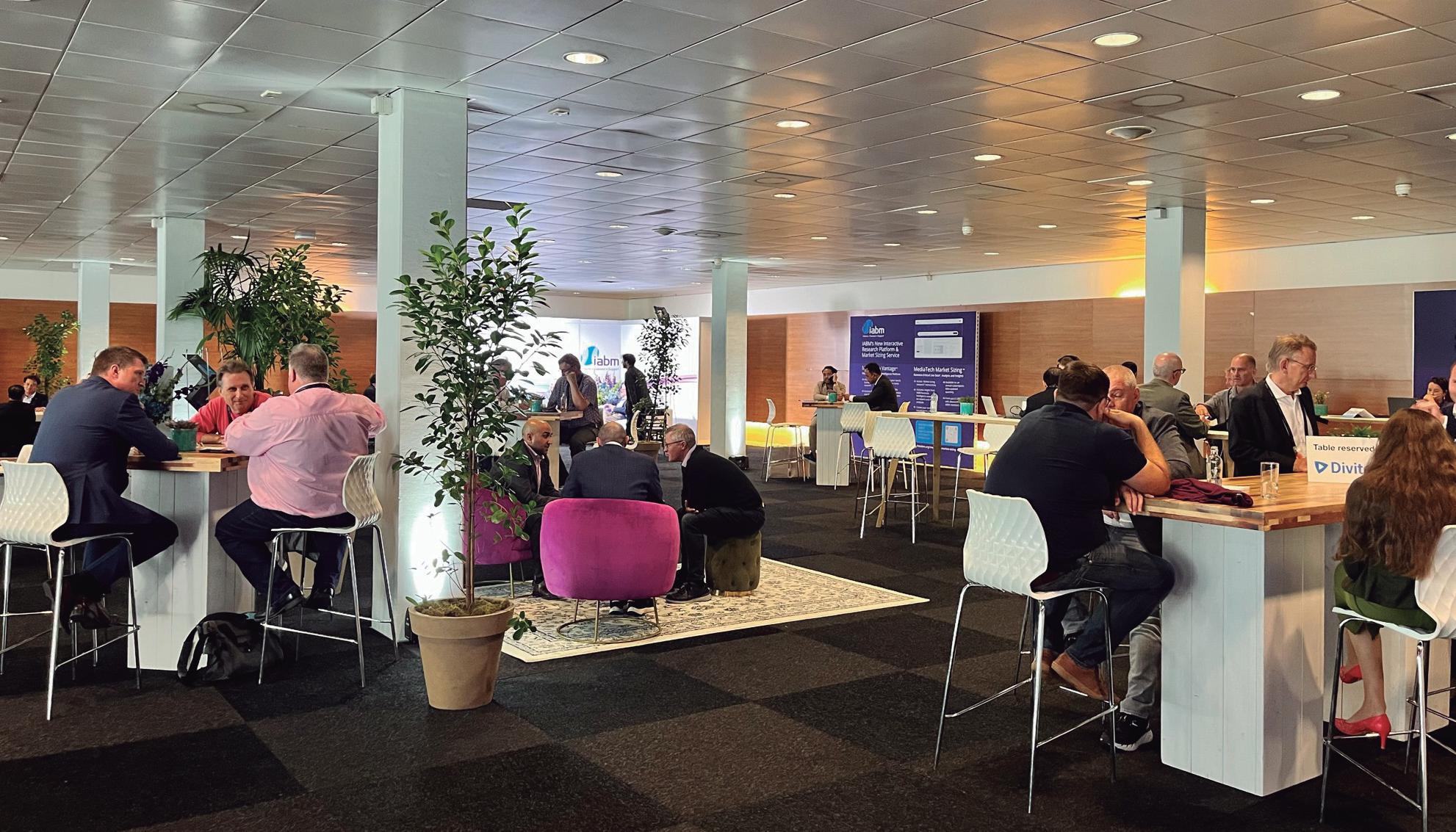
The TM Broadcast International team brings this interview to its readers as Meek’s insights will shed light on how IABM is strategically positioned to help its members achieve sustainable growth and operational excellence in a competitive industry such as broadcasting. Please, elaborate on IABM’s mission to connect and inform the global MediaTech community. How has this mission evolved over the years?
IABM’s core mission is to help its members do better business; this has always underpinned everything we do. Over the past few
years, we have developed this core idea into three pillars that together describe all of our activities on behalf of our members: Inform, Connect, Support. Activities within each pillar inevitably overlap, but can be broadly described as follows:
Inform covers activities such as our world-class business intelligence publications, our Journal and Knowledge Hub, as well as keeping members informed of the output of various standards bodies - and, of course, ensuring that members are aware of all the activities we undertake to support them. It also includes our activities on their
behalf to promote their products and services to their customers through our news and feature publications, events where we bring members and end-users together and our BaM Awards®, which celebrate their innovation; and our Regional Members Councils, which ensure that local and regional concerns and initiatives are supported in all major markets around the world. And last but not least, our comprehensive training o ff ering, which includes a wide range of online and face-to-face courses that provide essential education to enable members and the industry as a whole to attract and retain talent.
Connect encompasses all of our activities that bring members together, often with their customers as an integral part. These include our State of the Industry brie fi ngs at major trade shows; our collaboration with AVIXA® to create UpStream events; member receptions and awards events; opportunities to contribute to our representation on standards bodies; member lounges at major broadcast and now AV industry trade shows, where members and their guests can share experiences and insights; our widely referenced Technology and Trends Roadmap™, which is a collaborative e ff ort between members and end users; and our website, which allows members to share their latest news with the industry worldwide. Our Global Engaged Partners program is also specifi cally designed to tap into the knowledge and experience of broadcast and media end-users and connect them with IABM members to achieve mutually bene fi cial results.
Support, as the name implies, includes the activities and services we provide to help members do better business. These include: member lounges with meeting rooms and IABM TV at major exhibitions - these are highly valued as spaces away from the show floor to conduct daily business or hold private meetings to develop business opportunities; member discounts on floor space at a number of exhibitions; special publications to support geographic, content chain, industry and technology initiatives; the IABM Business Standard, to which all members subscribe and which gives authority to their operations; and again, our training, which helps members attract and retain talent.
How does IABM facilitate networking and interaction within the broadcast and media technology industry to shape its unique ecosystem?
IABM facilitates networking and interaction within the broadcast and media
technology industry through a variety of strategic initiatives and platforms. Our Global Engaged Partners program connects industry endusers with IABM members, fostering mutually beneficial relationships and knowledge exchange. We provide member lounges at major exhibitions, offering spaces for business meetings and networking away from the show floor.
Our awards events celebrate innovation and excellence in the industry, bringing together key players to recognize achievements and forge connections. State of the Industry Briefings at major trade shows provide valuable insights and opportunities for attendees to engage with industry leaders.
The IABM Knowledge Hub serves as a centralized resource for industry information, promoting knowledge sharing and collaboration. Our magazine offers a platform for members to stay informed about industry trends and developments.

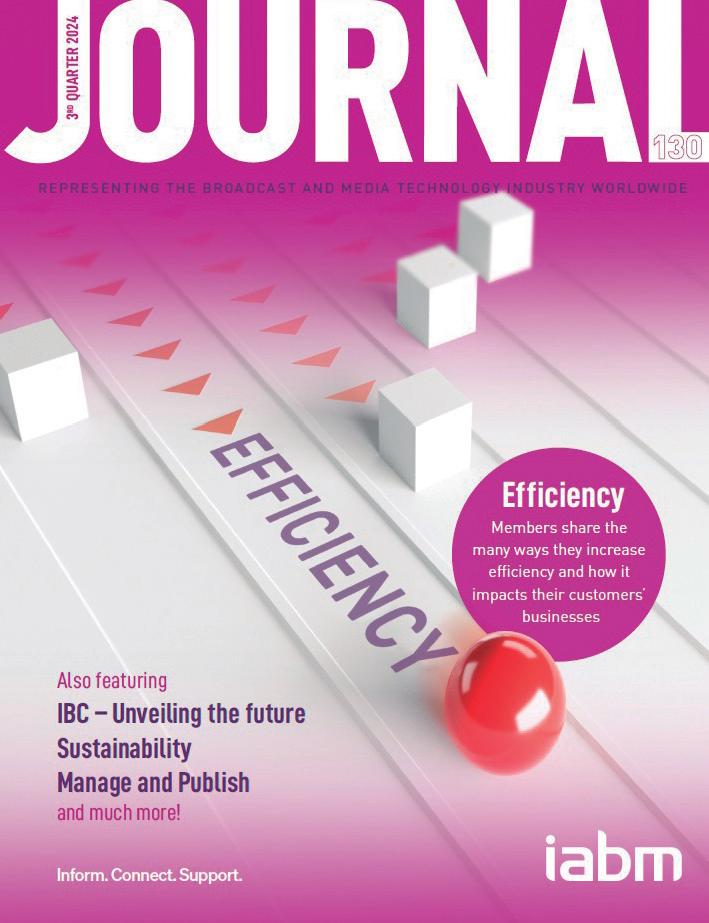
We also represent our members on various standards bodies, ensuring their voices are heard in shaping industry standards.
Additionally, our Technology and Trends Roadmap is a collaborative e ff ort between members and end-users, providing a comprehensive view of where the industry is headed and facilitating discussions about future innovations. Through these diverse initiatives, IABM creates a robust ecosystem that encourages interaction, knowledge sharing, and collaboration among all stakeholders in the broadcast and media technology industry.
In what ways is IABM helping the industry navigate the digital transformation in the Broadcast, Media, and Entertainment sectors?
Our business intelligence publications not only provide IABM members with key insights into the current state of the
industry, but also identify emerging trends. This is key to informing members on the state of digital transformation and what to expect in the coming months and years. This is supported by our biannual State of MediaTech report, released every NAB Show and IBC, which gives members a holistic view of where things are and where they’re going. Our training courses are constantly being updated and new ones added to ensure that IABM members can keep up with the digital transformation in real time.
Can you explain the significance of the BaM Content Chain® model and how it supports technology buyers, users, and vendors?
Before we introduced the BaM Content Chain®, the industry was structured around product types that had become unwieldy and no longer represented the shape of the industry.
The BaM Content Chain® redefined the industry as a series of natural
business processes that begin with content creation and continue through the production, management, publishing, monetization, and consumption of that content. All parts of this process are underpinned at all stages by three unifying strands - store, connect and support. The industry was quick to embrace the concept of the BaM Content Chain® because it provided a natural framework for each part of the process served by buyers, users and providers. Launched in 2018, it has proven to be a robust model that can accommodate change as the industry evolves.
What are the key emerging technologies that IABM is focusing on, and how are they expected to impact the industry?
To answer both this and your next question, the increasing adoption of AI/ ML at all stages of the BaM Content Chain® is a priority. We also produce regular updates on blockchain, audio technology, cloud and immersive.
How is IABM tracking the adoption of AI and ML in the media sector, and what trends have you observed in recent years?
In addition to regularly reporting on AI/ML developments in our monthly MediaTech Tracker, we also publish articles on AI/ML in our Journal and Knowledge Hub. Our Business Intelligence unit also regularly covers AI/ML in its Adoption Trends reports.
How do IABM’s business intelligence services help member companies align with new opportunities in the MediaTech landscape?
This question drives right to the raison d’être of our Business Intelligence Unit; all of its reports are focused on revealing current and future industry trends to help our members do better business.
A visit to our MediaTech Vantage business intelligence website (https:// vantage.theiabm.org/) will quickly illustrate the huge
range of tools available to members to help them identify new opportunities.
We have also recently published an introduction to the Enterprise AV Market, which is designed to help members enter new, profitable business areas. Our Technology and Trends Roadmap® is also relied on by members in aligning their development strategies with areas of business most ripe for growth.
What future trends does IABM foresee in the broadcast and media industry, and how is the association preparing its members for these changes?
The drive for efficiency as the broadcast and streaming markets mature will be a major trend. This is in line with the increasing importance of tangible sustainabilitydoing more with less and reducing the environmental impact of every activity in the BaM Content Chain® IABM regularly publishes information on these two trends. Convergence is another important
trend - there’s a growing demand for high quality - often broadcast quality - production capabilities across many sectors; corporate, retail, hospitality, finance, pharmaceutical, healthcare are just a few examples of industries that are increasingly relying on high quality video to communicate with stakeholders, customers, etc. Some of these are a natural market for MediaTech vendors looking to branch out from their core business. We are working with AVIXA® to facilitate this, as well as producing our own introduction to the Enterprise AV market, and will be increasing our activities in this area over the coming year.
With regional councils across the globe, how does IABM ensure that it remains relevant and responsive to the needs of its diverse membership?
The IABM Regional Members’ Councils were created with precisely this aim in mind. We have active councils in the Americas,
EMEA, APAC, UK and DACH which not only support members in their regions with local activities but also carry this representation through to the IABM Board, ensuring that regional requirements are understood and met.
How do events like the IBC Show and NAB Show contribute to IABM’s mission, and what can attendees expect from these gatherings?
As we already discussed, we help our members to navigate the industry through different benefits related to exhibits and shows: State of the Industry sessions, member lounges, IABM TV, floor space discounts, State
of MediaTech reports, awards events – and a large presence from IABM staff to ensure members get the most out of their investment in these events.
IABM members can expect to be informed, connected and supported at IBC, NAB Show and a number of others around the world.
What initiatives is IABM undertaking to promote sustainability within the broadcast and media technology industry?
Sustainability features as a theme in every edition of the IABM Journal, where members share what they are doing to promote sustainability in their own, and their customers’, operations. As mentioned earlier,
our Business Intelligence Unit tracks and reports on sustainability in its Sustainability MegaTrends report. We also recognise excellence in sustainability at our Annual Awards in the Environmental Sustainability category.
Could you share any upcoming projects or initiatives that IABM is planning to launch in the near future to further support the industry?
As already mentioned, our efforts to help members enter the Enterprise AV market is our most important initiative for the coming year, alongside maintaining all the other activities we already carry out.


By Carlos Medina Audiovisual Technology Expert and Advisor
The Internet has changed many aspects of our personal and professional lives. As far as audiovisual content is concerned, it has led to other lines of business for traditional media, it has led to the birth of new forms of audiovisual consumption through the other platforms (OTT – Over The Top) and, above all, it has generated new content and provided any citizen, restless person and entrepreneur, the possibility to participate in social media.
YouTube, Facebook, Instagram, Vimeo, Twitch, TikTok, Twitter X, WhatsApp, Pinterest, Discord, Telegram, BeReal, FaceCast, Snapchat, Spotify, LinkedIn are some of the social media/
platforms that increasingly feature more content every day in audio, video and/or photographic format. According to the IAB Spain 2023 study, sponsored by Epsilon Technologies and Wuolah and prepared in collaboration with Elogia, the five social media most used by teenagers (12-17 years) are: WhatsApp (94%), Instagram (84%), TikTok (79%), YouTube (67%) and Spotify (57%).

The numbers keep growing year after year. It is estimated that by 2025 there will be approximately 5.4 billion users active on social media in the world, largely from Europe, America and Asia. This data allows us to envisage a scenario where there is a constant need to create and generate new content on social media.
YouTube was launched on February 14, 2005 by Steve Chen, Chad Hurley and
Jawed Karim and is now the second most visited website in the world, second only to Google.
YouTube has not stopped gaining users since its launch and is currently the open video platform par excellence, thanks to the wide and diverse content it offers, the vast majority of which is freely accessible. In 2022, YouTube uploaded more than three hundred hours of video per minute and
over five billion videos a day were watched on this platform (Source: https://vpnoz.com/).
But, how professional are these contents? How has the creative quality of content evolved? What audiovisual equipment is being used? These are some of the questions I have asked given the great impact that social media have for a large part of society.
It is clear that one of the defining characteristics of content on social media is diversity and chaos in terms of the type of content and even in terms of creative and technical quality. But, if we delve a little more in the landscape of existing channels and the most influential people who work for and through social media, the matter changes, reaching very high levels of professionalism.
This professionalization means that details are taken care of in terms of lighting, audio quality, visual composition, multi-camera productions, photo/video editing and retouching techniques
and, of course, in other aspects of the production of that audiovisual content, such as locations, recording sets, depth and rigor in the contents, costumes and/or makeup, among others.
How many of the people who want to stay on social media have had to invest in quality technical equipment, have learned to make video edits incorporating e ff ects, labels and di ff erent transitions, have had to modify their bedrooms or living rooms, buy new furniture or decorative elements to present more attractive backgrounds or even rent or move to completely professional spaces that
are properly fi tted in order to continue generating content?
This trend is not only seen in the influencer ecosystem and its variants (Nano influencers, Micro influencers, Macro influencers, Mega influencers, Celebrities, Niche influencers, Professional influencers, Brand Advocates, Everyday influencers, according to the source: https://blog. hubspot.es/marketing/ marketing-influencers, but it has also pervaded many content generators who have a much lower percentage of subscribers or who are simply looking for a “like”.

All these topics are a subject of study and analysis in order to see the evolution and constant transformation that has existed since the origins of social media and platforms. In this case, we will focus on the current panorama of video recording cameras that are most used when making a video for content and/or vlogging (so live or streaming cameras are not considered here).
First of all, we must note that the use of smartphones prevails, given that it is an easy-touse tool, well established among the population and with increasingly high levels of technical quality parameters and tools for content generation (apps, fi lters, e ff ects, edition, streaming...). But, when we research the market for photo/video cameras and get to fi nd out the tools of many of the most in fl uential and proli fi c people in generation of content, we can see that there are brands and models from already established environments such as photography and video.

And, before moving on to a brief history of the most used models, an obvious conclusion is the coexistence of different technologies in the social media environment, sometimes due to the very philosophy of participation that these new forms of communication feature and, on other occasions, by the lack of criteria and standard in the distribution of audiovisual content.
The dominance of professional cameras is also observed when looking for quality and performance in the face of the constant expansion of smartphones. This issue was already familiar to us, long-standing audiovisual freaks, when the first mobile phones emerged that enabled capture and recording of photographs and videos, which for the
most apocalyptic meant “the death of photographic and videographic cameras”. What memories: first smartphone with a camera from the Japanese company Kyocera with its VP-210 model, pioneers in 1999.
Therefore, in this article we are leaving out smartphones, webcams and the different PTZ ranges in order to focus on what is happening among social media and PRO and broadcast photo/video cameras.
Currently, behind the contents on social media -which result in videos and/ or vlogs of a high level, both in content and creativity through rigorous technical and artistic parameters- are the following brands and models of cameras/videos with different features and prices to cover any need:
This manufacturer has been since the inception of smartphones firmly committed to keep its cameras/video at the forefront of technology at very competitive prices. As they have also been involved in social media from the outset:
CANON 5D Mark III (2012), a versatile full-format DSLR capable of capturing 22-megapixel images at 60 fps and Full HD video.
CANON 6D (2013), digital reflex DSLR camera (Full Frame CMOS, 20.2 Mp, 3.2” LCD).
CANON EOS 80d (2016), versatile digital reflex camera with Wi-Fi, it has 24.3 Mp APS-C CMOS sensor and records Full HD videos at 60p.
CANON EOS 2000D (2018), 24.1 Mp reflex camera for cinematic Full HD videos.
CANON EOS REBEL T7 (2018), 24MP resolution reflex camera and APS-C CMOS technology.
CANON EOS M50 (2018) / EOS M50 Mark II (2020), mirrorless camera designed to capture special moments with ease and quality thanks to a 24.1MP APS-C CMOS sensor and advanced and enhanced features.
CANON G7 Mark III (2019), compact camera that allows you to capture the best version thanks to its 4K video, large 1.0 type sensor and 20.1 Mp photos.
CANON Powershot G7 Mark III (2019), compact camera that allows capturing 4K video, with a large 1.0 type sensor and 20.1 Mp photos, all this in a portable design.
CANON EOS R7 (2020), is the transition to APS-C with the mirrorless R system. Featuring a 32.5MP CMOS sensor and DIGIC X processing, it supports 4K video up to 60p, or 30p when oversampled from a 7K area, as well as Full HD up to 120 fps.
CANON EOS R10 (2022), an EVIL camera, lightweight and mirrorless, featuring 24.2 Mp and APS-C sensor for high definition and high resolution images. It allows 4K 30p video recording.
CANON XA60 (2022), professional CMOS 4K camcorder type 1/2.3 . With advanced autofocus, 20x optical zoom and 5-axis stabilization, 3G-SDI, HDMI output.
CANON PowerShot V10 (2023), a compact camera that is perfect as a different and original pocket solution for making attractive 4K UHD content with a wideangle lens.
CANON EOS R8 (2023), a Full-Frame mirrorless camera, with exceptional autofocus and low light performance and professional video, such as 4K 60p resolution.
CANON EOS R50 (2023), an EOS R mirrorless camera, enabling everything from sharp photos to 4K videos and live streams. It has a 24.2 MP APS-C sensor.
CANON EOS RP (2024), a small, lightweight and very intuitive 26.2 MP Full-Frame mirrorless camera.
CANON EOS RP

The models from this manufacturer have made it back to the main best-opinion lists drawn by users and show an upward trend in sales of photo/video camera equipment:
OLYMPUS PEN-F (2016), a Micro Four Thirds mirrorless camera (or CSC type) featuring the design of its first models back in 1959. It offers high-resolution imaging capabilities with a 20.3 Mp Live MOS sensor and TruePic VII processor, recording Full HD 1080p videos.
OLYMPUS PEN
E-PL100 (2019), a 15.9 Mp Micro Four Thirds mirrorless camera, with interchangeable lenses.
OLYMPUS OM-D-M5 III (2019), a mirrorless camera with a 20 Mp Live MOS sensor with a powerful stabilization mechanism and interchangeable optics.
OLYMPUS TOUGH TG-6 (2019) made to withstand all extreme environments with a large wide-angle lens. 4K / FHD video.
OLYMPUS E-M10
Mark IV , (2020), Micro Four Thirds camera with 20 Mp Live MOS sensor, interchangeable optics and 5-axis image stabilizer.
A manufacturer that has seen the growth of the niche market for this type of cameras and, as a good connoisseur of the PRO and broadcast audiovisual market, makes its own bet with models very well adapted to the needs of content generators for social media/platforms, a perfect combination between design and engineering:
FUJIFILM X-S10 (2020), a compact mirrorless camera body packed with cutting-edge technologies.
FUJIFILM X100V (2020) / FUJIFILM X100VI (2024), are 26.1 Mp and 40.2 Mp APS-C cameras, respectively.
FUJIFILM X-S20 (2023) a 26MP APS-C sensor camera which offers recording at up to 6k 30p in Open Gate mode (with 4:2:2 sampling and 10 bits of color), 4K 60p with cropping and Full HD at 240fps.
FUJIFILM X-S20

One of the most outstanding manufacturers in the audiovisual sector at the PRO and broadcast levels has not missed the opportunity to combine all its experience, technology and innovation in the manufacture of models that are always endorsed by the critics of professionals, technology experts and users themselves:
SONY DSC-RX100V (2016), a 20.1MP Exmor™ CMOS Compact Camera with 4K video recording.
SONY a6100 (2019), an APS-C E-mount mirrorless camera, with a 24.2 Mp Exmor™ CMOS sensor.
SONY a6400 (2019), mirrorless camera with E-mount and a 24.2 Mp APS-C Exmor™ CMOS sensor and the world’s fastest autofocus.
SONY a6600 (2019), camera with remarkable image stabilization, amazing image quality, a high-capacity battery and 4K HDR (HLG) video recording.
SONY ALPHA 7C (2020), a compact mirrorless Full Frame camera with interchangeable lenses and autofocus function.
SONY ZV-1 (2020) / ZV-E1 (2024), the world’s most compact and lightest interchangeable-lens Full-Frame camera. Both come with backlit Exmor™ R CMOS image sensor.
SONY ZV-E10 (2021), interchangeable-lens camera for vlogging with large 24.2 Mp Exmor™ APS-C CMOS sensor.
SONY ZV-1 II (2023), an ideal versatile vlogging camera. Compact and portable, it features a wide-angle zoom lens with 21.0 Mp Exmor™ RS type 1.0 CMOS sensor.
Of course, this manufacturer is another not to be missed when presenting photo/video camera models adapted to the new content markets.
PANASONIC
LUMIX G90 (2019), Mirrorless Micro Four Thirds camera with CMOS 20 Mp.
PANASONIC
LUMIX G100 (2020), 20.3Mp Micro Four Thirds mirrorless camera for vlogging with 4K recording, a compact design and extraordinary sound quality.
PANASONIC GH6 (2021), hybrid mirrorless camera with the new 25.2 Mp Live MOS sensor, 4K video at 60p/50p 4:2:2 10-bit and unlimited recording time.
This manufacturer, highly recognized in specific sectors of professional photography, has never given up on the needs of content creators for social media and, therefore, offers some very specific models that have been very well accepted:
NIKON D5600 (2016), a 24Mp APS-C CMOS DSRL camera.
NIKON COOLPIX P1000 (2018), a compact bridge camera with a 125x zoom lens. Featuring a 1/2.3 inch CMOS sensor that delivers 16.79 million pixels and records video in 4K/UHD format at 30p or Full HD (1080p) at speeds up to 60p.
NIKON D3500 (2018), DX single-lens reflex digital camera, CMOS 24.78 Mp.
NIKON Z 50 (2019), mirrorless DX camera that can record 4K/UHD videos at 30p and shoot footage in slow motion in Full HD.
NIKON Z6III (2024), a 26.79 Mp CMOS FX camera to enhance creativity with 6K 60p in internal N-RAW.

GOPRO Hero 12. This manufacturer has made itself known from the first moment with action, extreme and/or adventure cameras. The Hero 12 is one of its catalogue that features a range of very interesting accessories and perfectly adapted for such special and high-risk recording environments.
DJI Osmo Pocket 3. This manufacturer, positioned by its drone offerings, is committed to this solution to introduce content on social media: a pocket camera stabilized with 1” CMOS.
Pocket Cinema 6K G2. This model is an attempt by this manufacturer to enter social media, but the features (a Super 35 HDR
CMOS sensor with a 6K resolution) of this camera clearly point towards other audiovisual production environments.


The demands of content creators for social media are increasingly high, their preferences being: the quality in the recording of video and external audio inputs, image stabilization, the incorporation of presets or cinematographic looks, optimal performance in adverse light conditions, selective focus settings or any recording tracking solution or AI processing application, battery life, weight and size. The cameras that have the possibility of interchangeable optics, double-slot storage cards and an articulated and
foldable (which can be placed in selfie mode) touch screen are also highly rated.
There are several aspects that defi ne these technical requirements and that will continue to shape the horizon in the use of cameras and/or video cameras of the PRO and/ or broadcast range in the social media ecosystem, such as:
• An increasingly competitive market marked by the presence of brands and products that monitor the care of content (technically, artistically and creatively)
for the benefi t of their marketing and advertising campaigns.
• A consumer of completely digital content with increasingly high aesthetic and technical training given the in fl uence of cinema, TV and video games.
• Audiovisual content, especially video, attracts more attention from users and generates one of the highest ROIs (Return on Investment).
• An increasingly evident positioning of live content that makes a

decisive factor that the technologies used neither fail, nor cause errors.
• A professionalization of the channels, networks and content platforms themselves towards more demanding standards and technical parameters that off er quality and security to their users.
• A call by the technology itself for content that is up to date and generates trends, such as advances in image resolution (UHD, 4K, 8K...) and/or color as an added value (HDR - High Dynamic Range -, WDR - Wide
Dynamic Range -...), among others.
The main manufacturers of video/photo cameras in the PRO and/or broadcast range, being aware of the great stir that social media have brought about and will continue to generate, do not want to lose that niche market of rental/ sale of capture/recording equipment.
Undoubtedly, every content has to have a photo/video camera adapted to the relevant needs, so it is best to explore the offering within the range of DSLR cameras, EVIL cameras,
mirrorless cameras, CSC type cameras, compact cameras, bridge cameras or specialized cameras, among others.
Contents on social media must be attractive and remain in force for the longest time of use by consumers/users/ subscribers. In this scenario, manufacturers and suppliers of technical material (PRO and broadcast) will always have a solution adapted to the needs of each person generating creative and technical quality content under professional parameters.
The big difference between the already known model and this new model, which carries the Pro label, lies in the major leap forward it offers to our communications thanks to the integrated noise suppression technology.

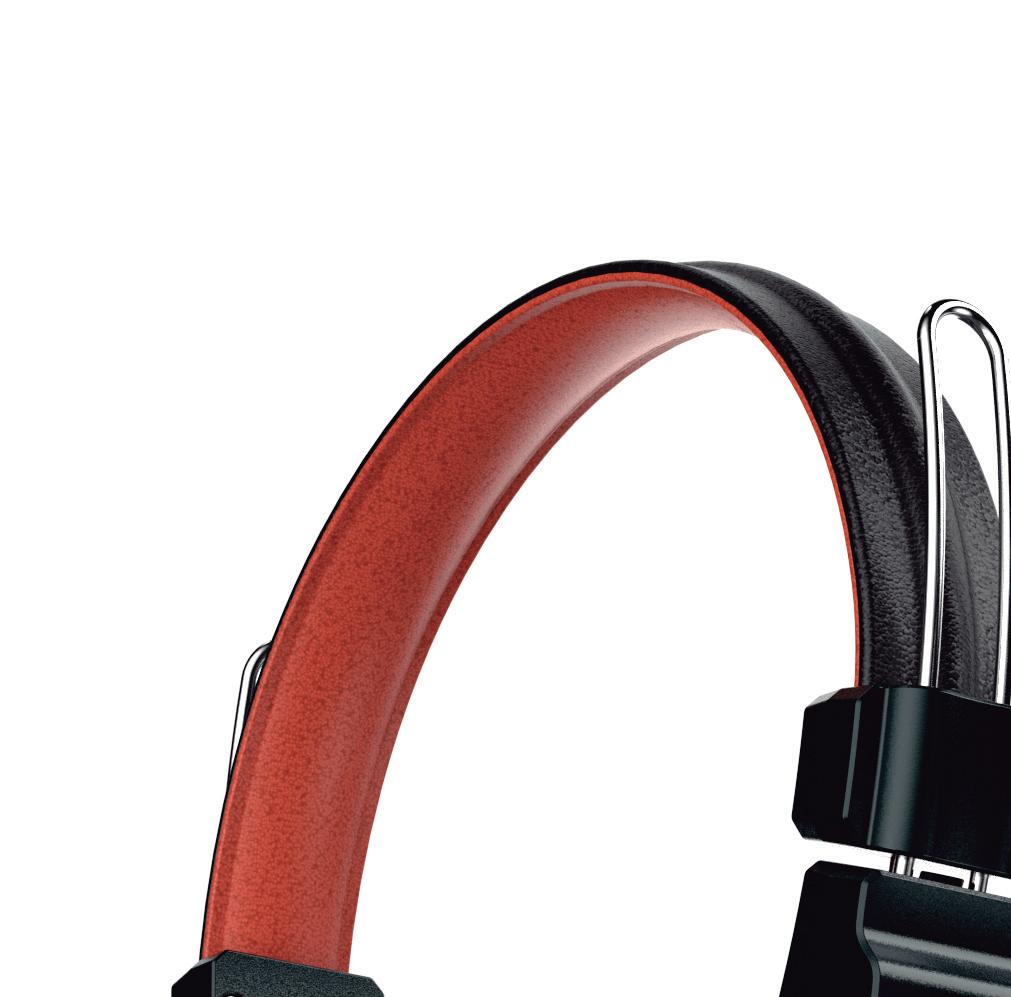
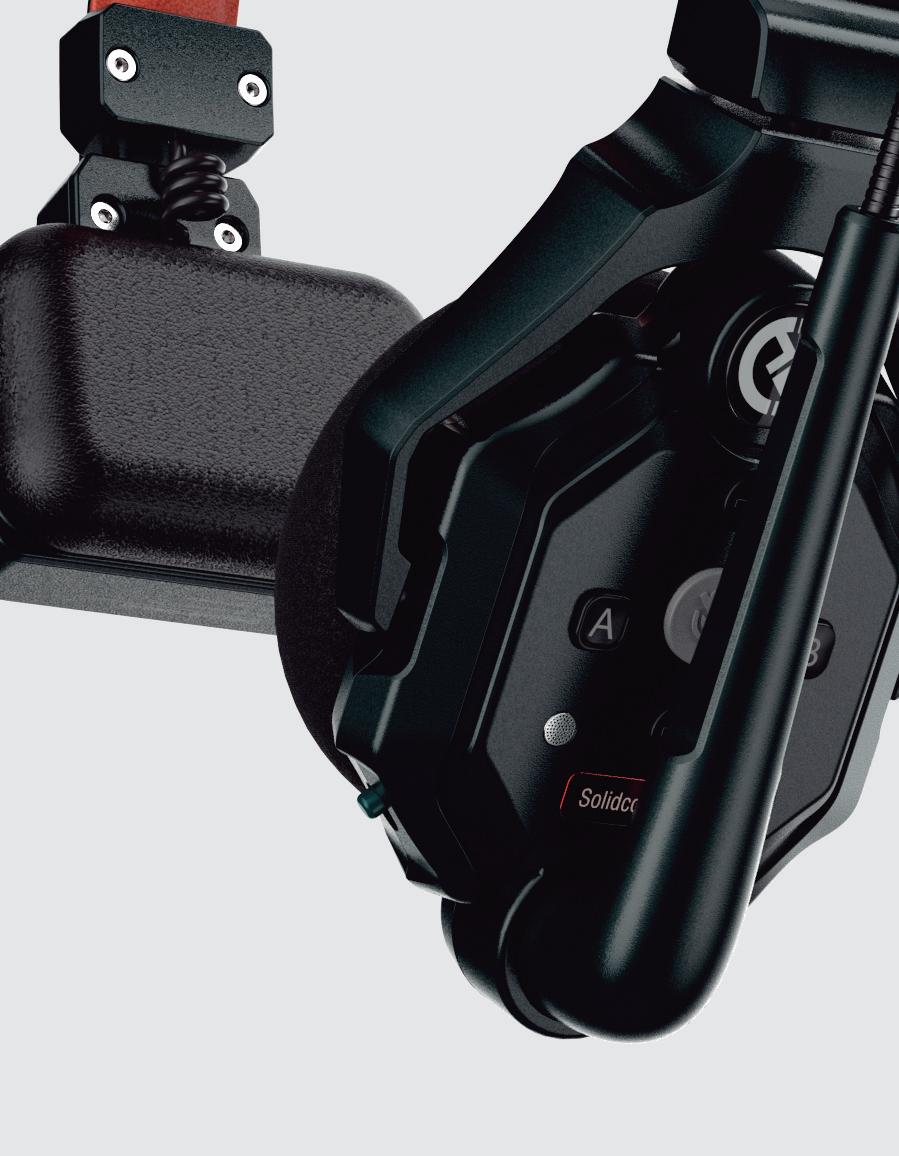

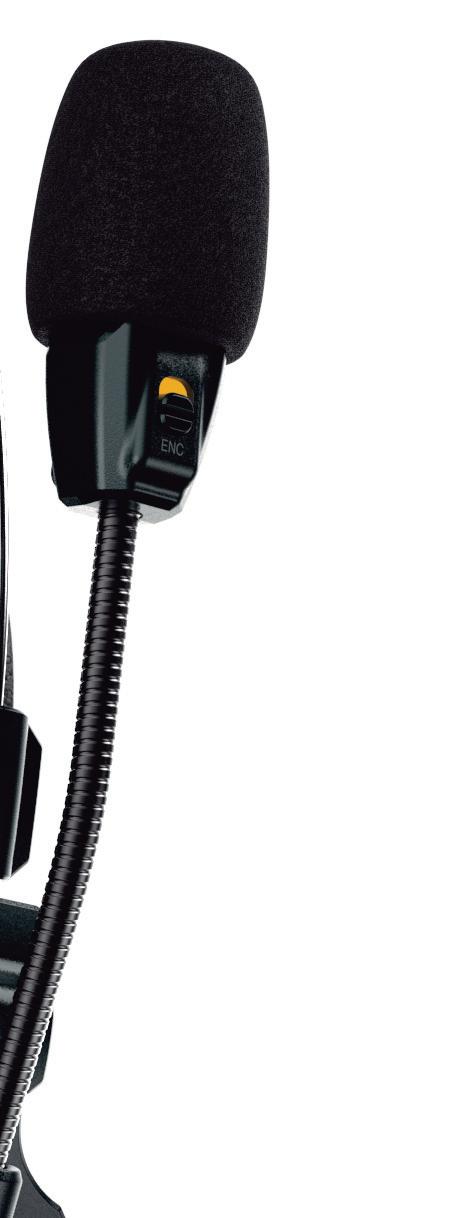







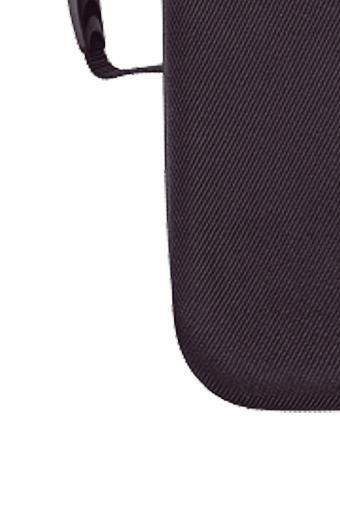



We have now the opportunity to test in our lab equipment that meets the most desired requirements in any production: it is efficient, reliable, and also has a price tag that makes it especially attractive. This is an extension in range over an earlier model, already known for its good results, but adding a clearly differential feature that makes it even more interesting.
The Hollyland brand arrived to the market a few years ago, but in this short space of time it has managed to earn a good reputation because of the quality, reliability and

competitiveness of its products for audiovisual production, most of them being related to the wireless transmission of signals, whether video or audio.
Conceptually, intercoms like the ones we tested on this occasion are equipment that has been an important part of many production environments for a long time. They are nowadays an essential element to keep all the members of a team effectively coordinated, thus facilitating discreet and secure communications among them.
The previous model already had a good array of features, among which
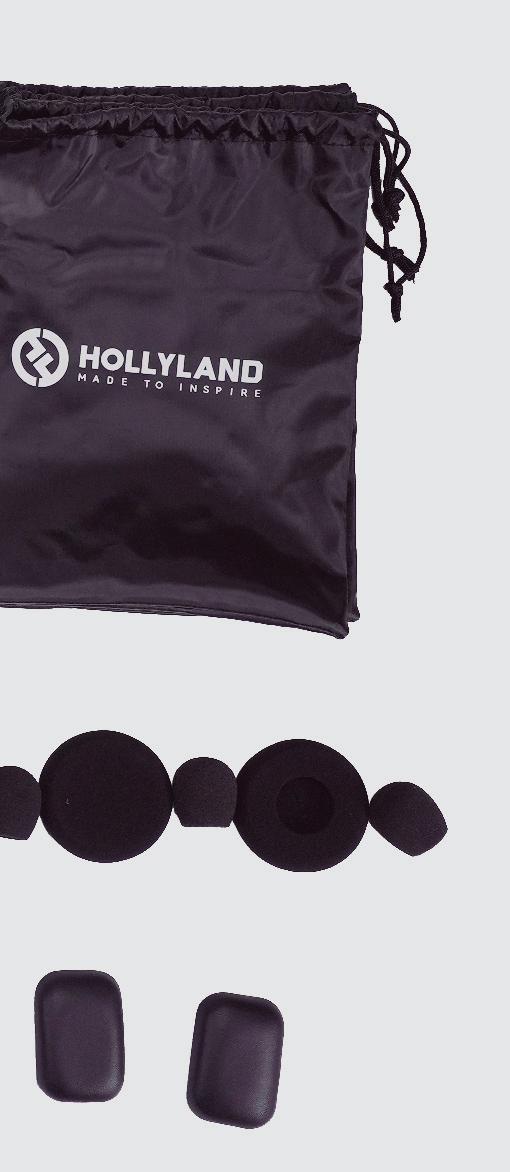

stands out a good range of up to 350 meters in open spaces, and operation without a belt pack that does not limit its excellent range. Maintaining all the benefits of its predecessor, the most striking feature that provides an interesting leap forward in this new “Pro” version is the built-in noise reducer.
But let’s start by making it clear what this noise reduction consists of before moving on. Because it is real noise reduction. What does this mean? We should not confuse it with the concept of noise reduction of telephone earbuds to which most of us may be used to.
Phone earbuds are capable of eliminating the noise that surrounds us so that it does not bother the user, but they do not keep the person on the other side of the call protected from all that ambient noise. On the other hand, the ambient noise reduction provided by these Hollyland Solidcom C1 Pro consists of the ability to filter this ambient noise around us in a way that does not disturb the rest of the team with whom we are communicating.
Keep in mind that these intercom communications are frequently maintained between groups of
several people, which can cause sources of unwanted ambient noise to multiply. This result is achieved thanks to the combination of a second external microphone with an internal processor, capable of “subtracting” that unwanted noise from our voice, thus making communications cleaner, more comfortable and effective, without sacrificing full-duplex bidirectionality.
Having clarified the scope and meaning of this concept to avoid confusion with the functionality of other equipment, let’s go with the complete analysis.
Physically, this piece of equipment is very similar to the previous model, which also remains in the catalogue: headband intercom, hands-free, no belt pack, suitable for operation with or without base station, with distinct padding in natural color and the leather-look of the headband, as well as the label with the model name. There are versions of one and two earpieces to meet different needs. There is also the possibility of working with a base station for both types of headphones.
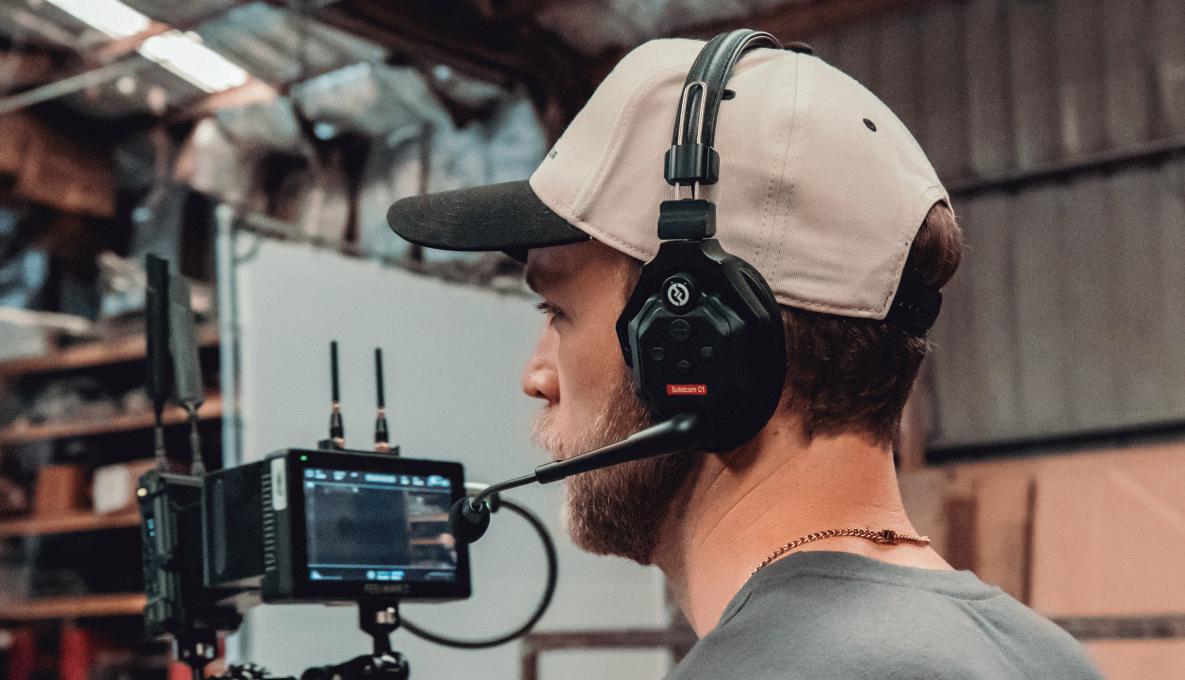
If we opt for the variant with a base station, the maximum number of simultaneous users is greater and the network that can be created more extensive. When such a base station does not exist, one of the units will always play the role of “master”, being it necessary to keep it on for all communications, even if it is not a part of them. It is only distinguished by the color of the label -red- while remaining blue in all other secondary units.






k re xist, ays ” ,





Technically, it operates within the 1.9 GHz band (DECT 6.0) with encryption, in order to ensure utmost confidentiality in our communications. Bandwidth ranges from 150Hz to 7kHz, more than enough range for quality voice transmission.
The system provides full-duplex communications, meaning that the line remains open in both directions and simultaneously for all equipment that has not been muted. But it can be switched to PTT mode, that is, push-to-talk, so
that communications will be unidirectional, in which case we have a button in the center of the headset that we must press to speak, remaining our broadcast automatically cut off the rest of the time.
Returning to the full-duplex mode, the activation of the mute mode is extremely simple and effective, as it is enabled by simply lifting the microphone towards the top of the headband and disabled when lowering it to the normal use position. In both the one-earpiece and two-earpiece versions, the microphone arm is articulated in both rotation directions, making it easy to use from one side or the other side of the head.

This is a particularly interesting aspect in the one-earpiece headset, which is also the one we had the opportunity to try.
The switch to enable and disable the noise suppressor is located next to the microphone, comfortably accessible from the outside, while inside we have a LED that indicates the relevant status: red if we are muted, green if the microphone is open, and blue if the microphone is open and we have the noise suppressor enabled. This LED is easily distinguishable, and it can be seen changing to red as we lift arm, since obviously, we will not be able to see it when it is at the very top.

On the outside of the headset, and next to the large central button to select and enable the PTT function, we find a pair of buttons to turn the volume up and down. The other pair of buttons, A and B, are useful for linking to one of the two different groups arising from the activation of the base-station mode. Keep this small detail in mind if you need to communicate with two different and independent workgroups so you send information only to the group for which it is relevant without distracting the rest of the team. Let’s just add that this base station, in addition to being powered by the mains, also works with batteries, thus facilitating its use in any location.
In a case like ours, without a base station, only button A is functional for pairing new units to our system, or pair one of our secondary ones to another different master unit. In our case, it seemed to us that the possibility of dispensing with a base station in our communications may mean
that in the case of groups of up to 8 people, the convenience of transport and ease of use will be additional advantageous factors to take into account.
Our test unit seemed very light, 170 gr according to catalogue specifications, and very well-balanced even in the case of a one-earpiece headset, since the battery housing is on the other side. It features a lid keeping it in place and insulating it from the outside. Despite their compact size, batteries offer a surprising usage time: the manufacturer announces more than 10 hours for the secondary units even with noise reduction activated, and more than 5 hours for the master unit with noise reduction activated and 5 additional units connected.
Considering that the equipment we had the opportunity to test -version 4S with the indispensable master unit and 3 secondary units- is supplied with 8 batteries in total -two per module- and also that the charger supplied as standard allows the
8 batteries to be charged simultaneously in about 2 and a half hours with a simple 220V to 12V 2A charger, we are assured of the possibility of covering endless sessions without any difficulty. It seems that power supply won’t be a concern under any circumstances.
By the way, among the facilities we found when unpacking our test unit, we saw that the equipment is provided already synced and the batteries come fully charged. Open and use with maximum efficiency.
Commercially, it can be ordered in versions of 1, 2, 3, 4, 6 and 8 units without a base station, or 4 or 8 units with a base station. If our communication needs are above that figure, we can always resort to setting up a small network by adding up to three base stations with up to 8 equipment units per station, to reach a maximum of 24 units connected in simultaneous communication.
It is also very handy to know that, if we have initially acquired a set of



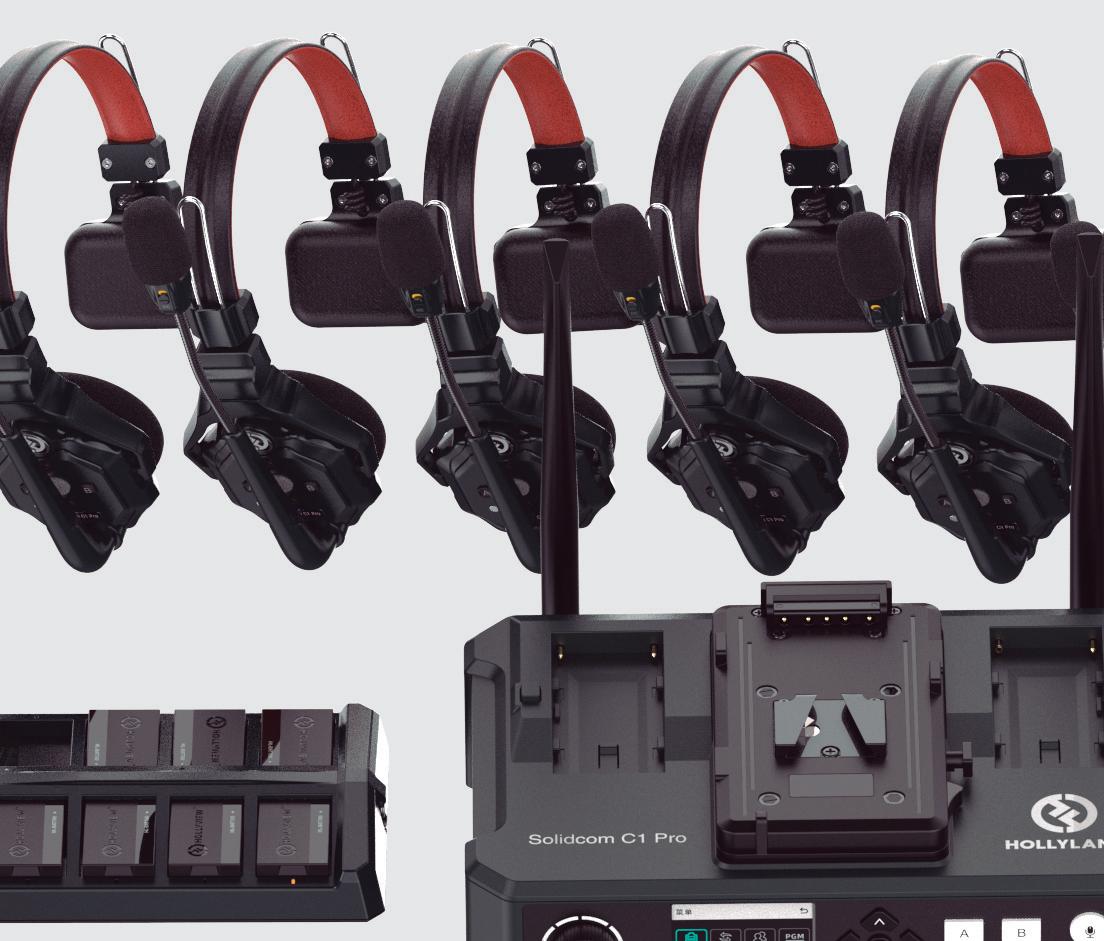




fewer units, we can add and synchronize secondary units to have them synced with our master unit up to the limit of 8 in the group, even without a base station. Also, as expected, a secondary unit can only be synchronized with one master, so if we sync it with a different master, it will be linked to that new group and will no longer belong to the previous one.
Going into the practical results, we start with the starring aspect to check the effectiveness of the noise suppressor in environments being similar


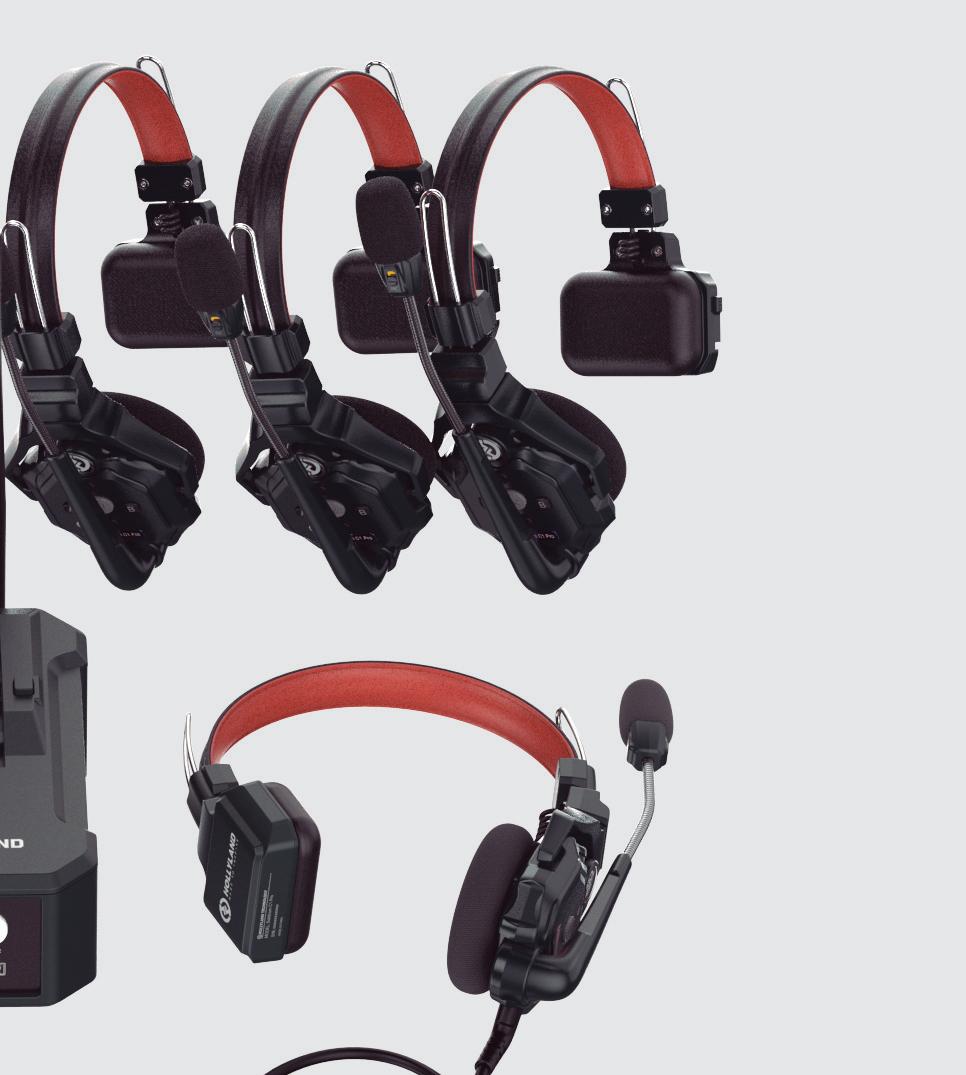

to those we will be facing, and we found pleasantly satisfactory results. According to specifications, the relative attenuation between microphones is 20 dB. It is true that this does not suppress all noises on all levels in every circumstance, but we have done some quite particular tests with interesting results.
For starters, without using the noise suppressor and in normal environments, the sound is always clear, the voice is perceived with all its nuances, and the volume adjustment



has sufficient range for practically all situations expected in a production.
When the sounds are in frequency ranges more or less far from the vocal frequencies, the result is excellent -as would be expected- as it cleans artifacts very well and without affecting the voice at all. Talking next to a highway with the noise suppressor activated turns the passage of cars into a distant murmur, although without this feature enabled the noise is quite annoying.
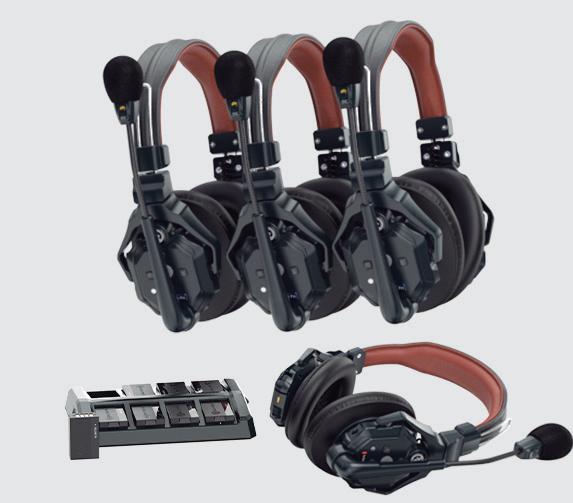
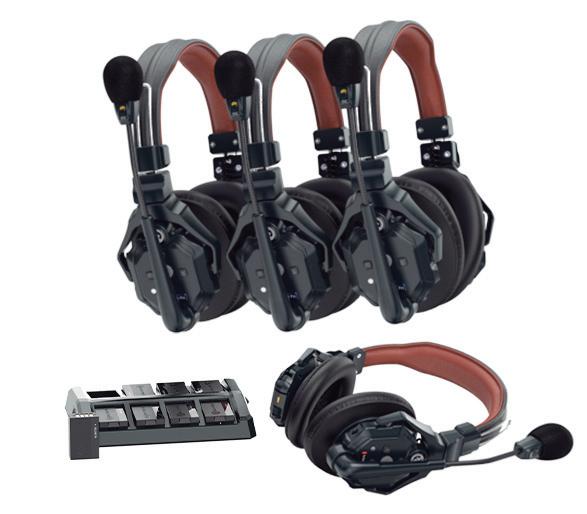
Then we deployed our long-suffering interlocutor in the middle of a completely full terrace, with quite an “atmosphere”, not to say turmoil, created by the multitude of simultaneous voices while keeping at a certain distance. The difference between turning the noise suppressor on and off was the difference between being able to have a normal conversation, or the latter becoming barely intelligible. We decided to raise the bar in an even more complicated environment and one even more
crowded voices of all kinds of tones and a generous volume: kids leaving a school. And the outcome for communication was just as satisfactory with the filter, and practically unfeasible without it. But what seems to us most important of all: in none of these cases did the voice of our interlocutor suffer the slightest distortion, always remaining clear and with a uniform volume.
Another peculiarity of this model is that in addition to the noise suppressor with electronic processing, it features a new fabric
filter in front of the microphone in order to minimize the action of the wind in a merely passive way.
As for the range, the result is within the foreseeable parameters. The nominal range reaches 350 meters, although this figure will always be the comparable reference in open spaces and without interference. But as we find buildings, concrete walls (vertical or horizontal) and other similar structures in the way, the range will naturally decrease. In this case and given the immense number of cases that can be presented, we advise doing some testing if needing to operate in industrial environments or with a lot of solid architecture involved.
The unit is comfortable to wear for hours and very easy to operate in most cases and for practically all the time. We must only touch it briefly to move the micro up or down to activate the muting, if we remain in bidirectional mode, full duplex, always keeping our hands free.
Regarding this aspect of mobility, the only objection that could be raised is that in case of sudden movements it could de displaced as it does not exert excessive pressure. It offers a good balance between pressure and comfort, favoring long use times, these being the circumstances that will be the most frequent.
What more features could be asked for? In the configuration without a base station it is not possible to send exclusive communications to a single terminal, although given its conception of maintaining maximum simplicity of use, it would be complex to select a destination unit without making operation more complicated. We do not know if this functionality exists in the configuration with base station.
As an extremely practical and no less important detail, in addition to finding it configured, synchronized and with charged batteries -as we have already mentioned-, the equipment comes in a flexible case that houses all the headset,
the charging station with its power supply, and a series of spare pads, with each headset also having its own case.
It is noteworthy that the replacement pads come in two different sizes and materials to suit different tastes or needs. The large ones with the padding covered in faux leather, and other small ones in foam, the same material that we also have as spare part for all microphones.
There are many uses and purposes for this equipment, not only in the field of audiovisual production, but in any other field in which close, safe and effective communication is convenient. From live events or shows to installations: we can think of a lot and the list would
be a long one. There is an anecdote that we cannot fail to mention in relation to the potential users that the manufacturer has in mind and that we find ourselves unable to imagine: the manual indicates that this equipment should not be used inside microwave ovens, conventional ovens, pressure cookers, or fires of any kind.
Anecdotes aside and now as a conclusion, we find this a reliable, safe and very economical piece of equipment that allows us to significantly increase our efficiency in production, simply because of the myriad of possibilities we have at our disposal by keeping our entire team communicated and coordinated without the need to increase our investment or our costs.

